


November 2016
Cancer Vaccines? Unicorns?
Understanding gene editing hopes and fears pg. 24
Pussy Riot Unbowed pg. 42
pg. 34

Lee Daniels
Pushing Pride, Truth & New Ideas

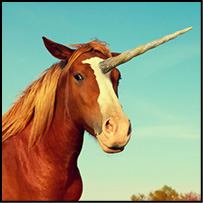

Page 11
Page 23

Page 18
Photo by Mona T. Brooks
Photo by Julian Bajsel

On the Cover: Lee Daniels, photos by Gareth Cattermole/Getty Images
Volume 11, Issue 1
Publishers
Roland Swenson, Nick Barbaro, Louis Black
Editor
Andy Smith
Art Director
Eleanor B. Rosaire Pousson
Advertising
Katharyn Howe, Una Johnston,
Katie King, Mirko Whitfield,
SXSW Contributors
Jody Arlington, Amy Braband, Rory Burbeck, Justin Burnham, Brett Cannon, Chris Cantu, Morgan Catalina, Hugh Forrest, Shelley Hiam, Zach Horn, Una Johnston, JIm Kolmar, April Litz, Andrew McNeill, Bobby Nall, Dean Palm, Leeann Pendley, Cathy Ricks, Ari Roth, Amy Wanke, Stacey Wilhelm, Luann Williams, Julie Yost
SXSW 2017 Logo Design
Foxtrot Bravo Alpha [FBA]
Contributors
Shermakaye Bass, Jared Dubin, Eli Fernandez, Cisco Gilliland, Linda Laban, Patrick Nichols, Danielle Nussbaum, Rob Preliasco, Susan Elizabeth Shepard, Jenny Smith, Nigel M. Smith, Dan Solomon, Luke Torn
SXSW Headquarters
PO Box 685289, Austin TX 78768 US
Tel 512/467-7979, Fax 512/451-0754
Email: sxsw
SXSW Sales & Exhibitions
MUSIC: Stacie Cline, cline@sxsw.com
FILM: Katharyn Howe, katharyn@sxsw.com
INTERACTIVE: Wendy Cummings, wendy@sxsw.com, Katie King, katie@sxsw.com
GAMING: Justin Burnham, jburnham@sxsw.com
SALES: sxsw.com/sales
SPONSORSHIPS: Scott McNearney,
mcnearney@sxsw.com
SXSW Music, U.K. & Ireland
Una Johnston, 9 The Coach Yard,
Cloughjordan, Co. Tipperary IRELAND
Tel/Fax: +353 505 42570
SXSW Europe & Int'l. Business Development
Mirko Whitfield, Blaihofstrasse 4, #10, 72074 Tuebingen-Pfrondorf, GERMANY
SXSW Japan
Hiroshi Asada, #406 2-3-21 Kabukicho
Shinjuku-ku Tokyo 160-0021
SXSW Australia, New Zealand & Hawaii
Phil Tripp, 60 King St., Coffs Harbour
NSW 2450 Australia, +61 (2) 6652 6675
SXSW Brazil
Tracy Mann
SXSW Central, South America & Caribbean
Peter Lewis
SXSWORLD (ISSN 1935-1496) is published by SXSW, LLC. five times per year in May, November, February and twice in March at 400 Bowie St, Austin, TX 78703. © 2016 SXSW, LLC. All Rights Reserved. Periodicals postage paid in Austin, TX and at additional mailing offices. “SXSW” and “South By Southwest” are registered trademarks owned by SXSW, LLC. Subscriptions are provided annually with paid registrations to the SXSW Conferences. Email for inquiries
POSTMASTER: Send address changes to SXSWORLD PO Box 685289, Austin TX 78768
Contents
SXSW.com | november 2016 | SXSWORLD 1


IN EVERY ISSUE
At A Glance
Understand the new expanded badge access for 2017
New & Noteworthy
Updates from the SXSW family of events
A Look Back: John Hanke
Niantic CEO gave Pokemon GO preview at SXSW 2016
Features
SXSW Eco 2016!
Remembering October’s conference in words and pictures
South By South Lawn
SXSW goes to Washington
Dr. Jennifer Doudna
CRISPR-Cas9 innovator and the new frontier of “designer genes”
Lee Daniels
Film and TV maverick on turning struggles into screen success
Pussy Riot
Nadya Tolokonnikova driving Russian agitprop collective forward
Bill Nye
The Science Guy’s climate change empowerment message at SXSW Eco
John Maeda
Design guru discusses importance of remembering the human element
Kate Crawford
Artifical Intelligence speaker on why ethics must be a focal point
The Solo Way
Transparent creator is making her own television revolution
Virtual Reality Concerts
Could a VR headset be your front-row seat or backstage pass?
Hip-Hop & Urban Planning
SXSW Eco session examined mid-century building schemes and rap
SURVIVE: Belated Exposure
In digital realm, sometimes musician’s popular notice comes late
The eSports Bubble
Will online gaming become more popular than live sports?





SXSW.com | november 2016 | SXSWORLD 3
At A Glance
SXSW Is Expanding Access For All Registrants!
We’re streamlining the conference into one unified event with 24 tracks of programming and offering more opportunities for networking, learning, and discovery than ever before.
Music Festival showcases will start on Monday, March 13 while the Film Festival maintains its nine day footprint starting on Friday, March 10.
The Platinum badge is still your best bet with primary access to all of SXSW at a lower price than last year, the Interactive, Film, and Music badges will now include expanded access to more of the SXSW Conference & Festivals experience. Attendees will still receive primary entry to programming associated with their badge type, but can now enjoy secondary access to most other SXSW events.
2 SXSWORLD | november 2016 | SXSW.com



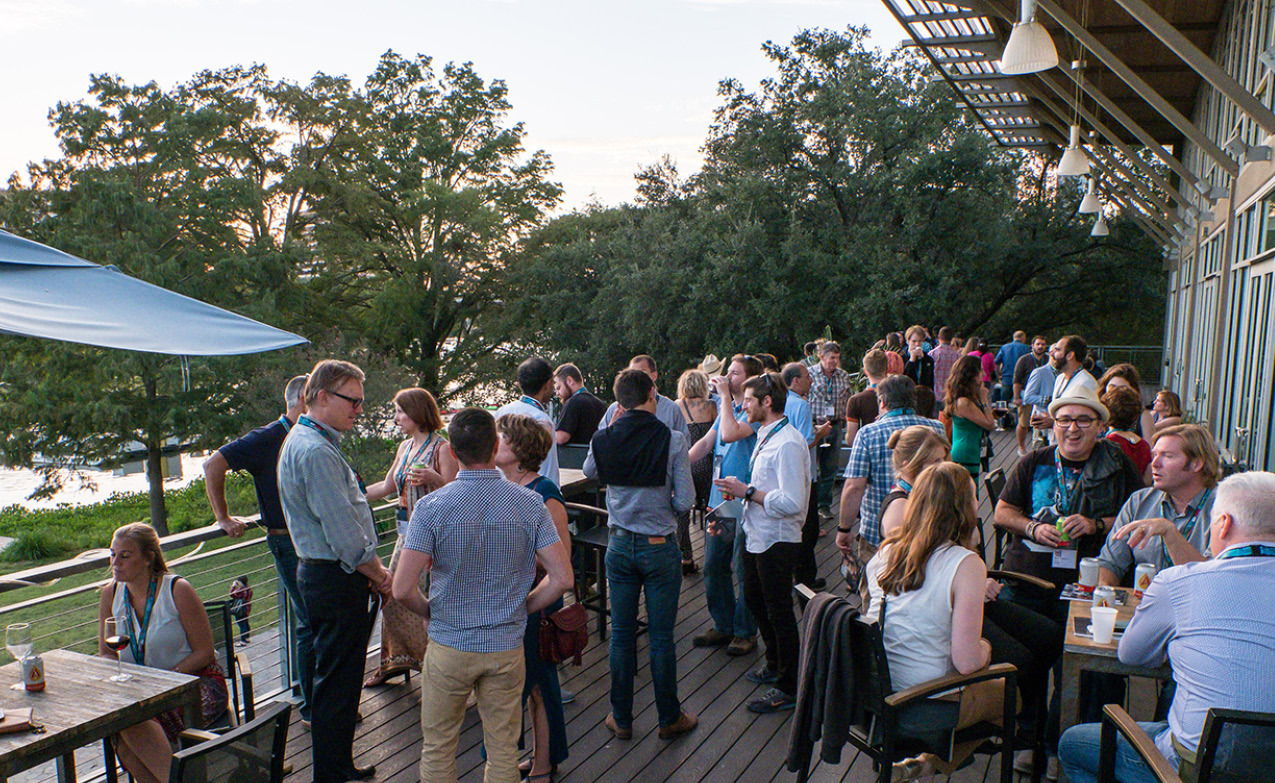
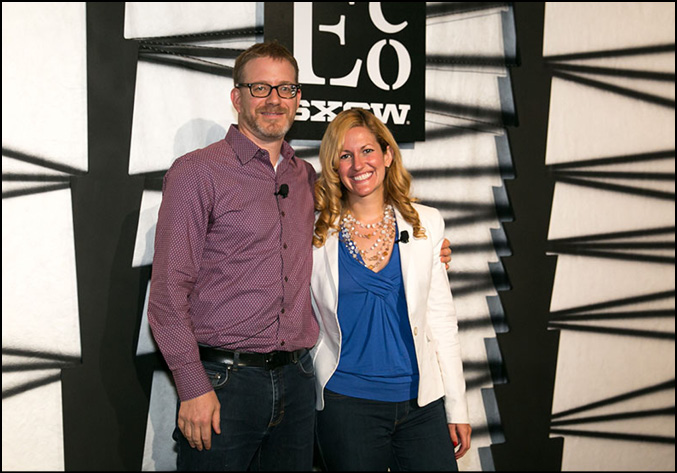
Kate Brandt
Photo by Diego Donamaria

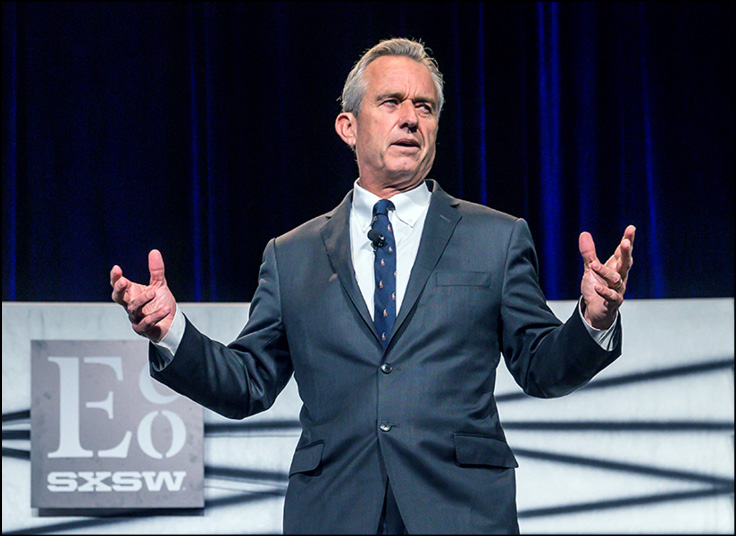
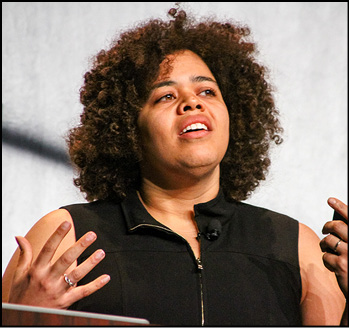
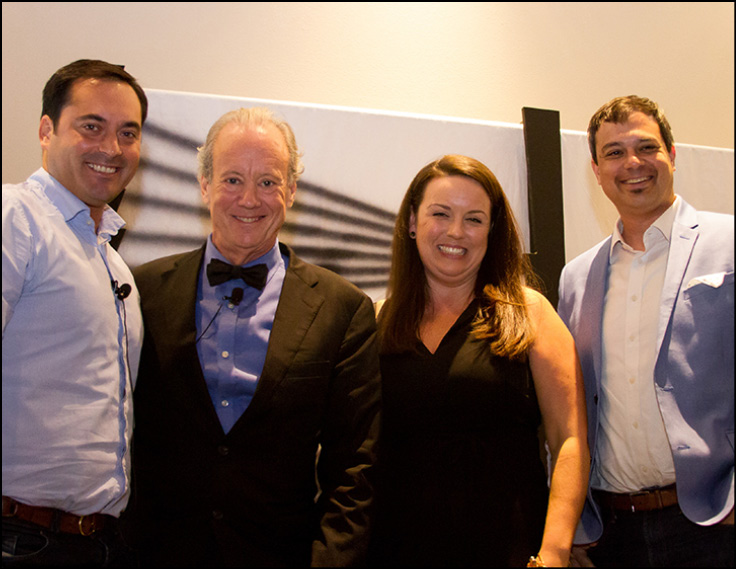
Sarah Richardson
Photo by Ziv Kruger
New Radicals
Photo by Jim Antich
Robert F. Kennedy, Jr.
Photo by Steve Rogers
Place By Design
Photo by Steve Rogers
SXSW Eco 2016 Welcome Reception.
Photo by Earl McGehee
“I honestly enjoyed every session that I attended - from the startup showcases to the panels around food waste, equity, etc ... I also got to meet a TON of people and made some connections that will certainly help our team in our advocacy around the antibiotics issue.”
Carmen Cordova (National
Resources Defense Council)
“It was a pleasure participating in SXSW Eco this year. I thought the audience questions during our panel were incisive, and the interactions with other attendees led to a lot of productive conversations!”
Steven Feldstein (U.S. Department of State - Deputy Asst Secretary/Speaker)
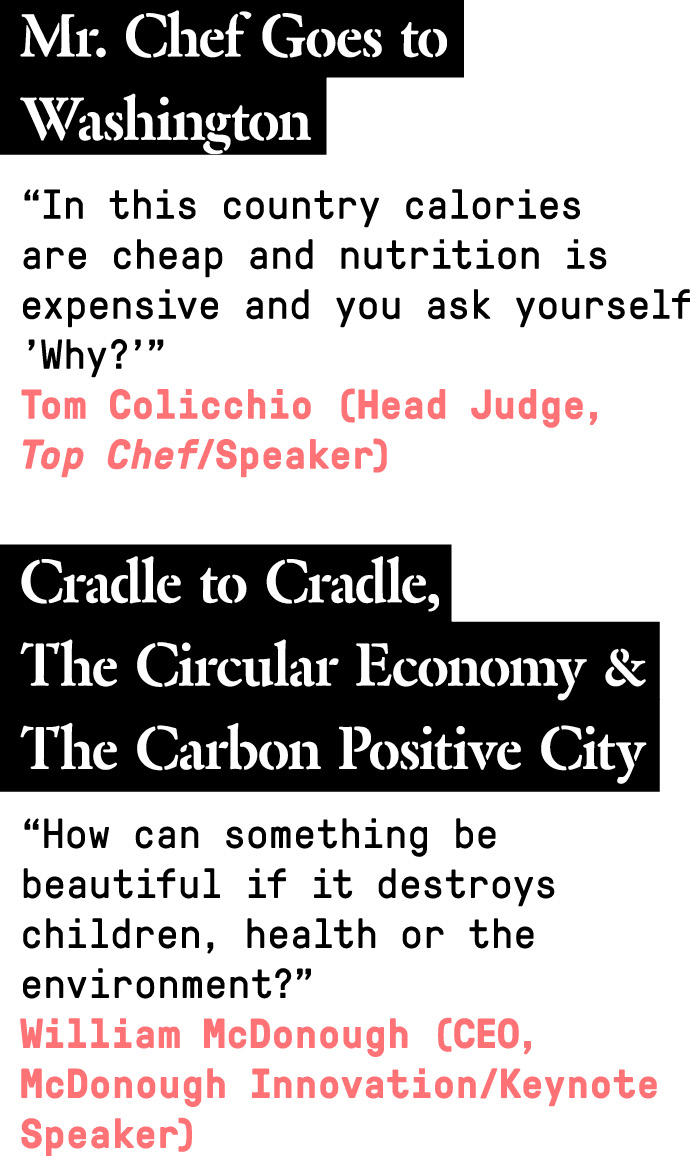
“I have been going to conferences for 16 years, but SXSW really hit it out of the park in terms of the balance between technical content and “expand your mind, blow your mind” content.”
Rachel Bannon Godfrey (Director of Sustainability/Associate, RNL Design)
“It was so eye opening to learn more about the work happening in other industries, to see the many many overlaps with our work, to see how we can start to stretch our thinking ...”
Sarah Morris (Senior Design Strategist, Inclusive Design
at Microsoft)
Here's a brief recap of what some of SXSW Eco's speakers and registrants had to say about this year's event.
Cheers To A Successful
SXSW Eco 2016!
SXSW.com | november 2016 | SXSWORLD 5
4 SXSWORLD | november 2016 | SXSW.com



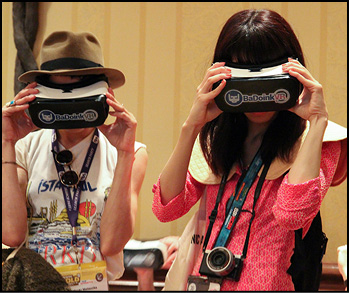
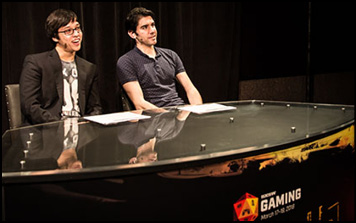
Photo by Benedict Jones
Tournament Stage SXSW Gaming 2016
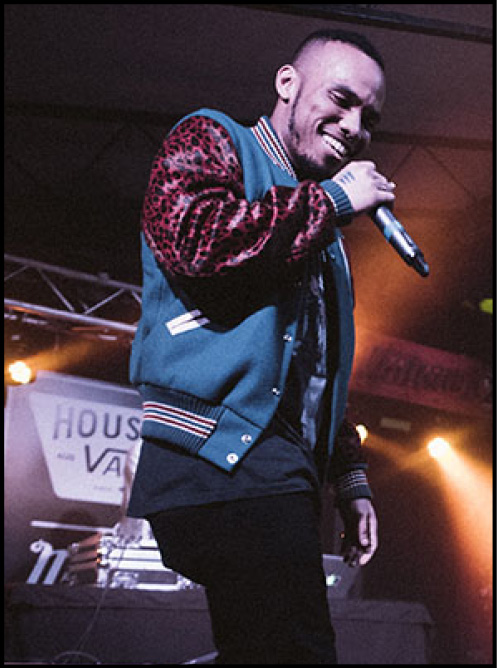
Anderson .Paak
Photo by Jeff Dean

Iggy Pop SXSW 2016.
Photo by Amy E. Price
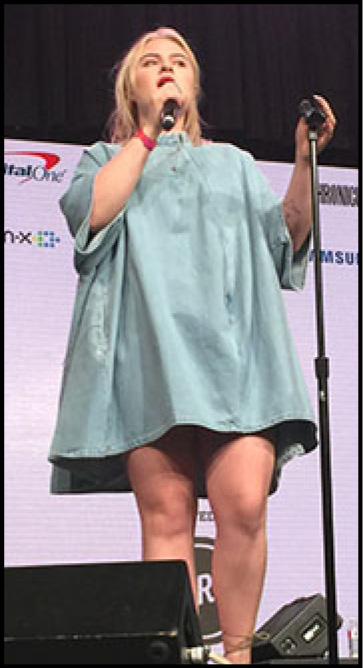
Låpsley
Photo by
Dinesh Shankar
Calling All Hackathoners
In the spirit of creative and tech synergy and overlap, the SXSW Hackathon (formerly the SXSW Music Hackathon) will combine music, AR/VR, tech and film into one, bringing the best and brightest developers together to reinvent the entertainment industry, in 24 hours.
Digital Domain is Now
Experiential Storytelling
New for 2017, Experiential Storytelling is one of the 24 tracks in the SXSW conference, and a direct evolution from our popular Digital Domain program. It's mission will be to continue to explore new directions in storytelling and experimental narrative storytelling via experimental technologies and methods. Announced sessions include:
Listen to SXSW Artists on SXSWfm and Spotify
With 200+ Showcasing Artists already announced for SXSW 2017, discovering the sounds of all of these artists can be a daunting task. Luckily, we have a couple easy ways for you to check them all out. First, check out our online radio stream, as well as our specialty shows on Mixcloud. Second, check out SXSW on Spotify and follow our SXSW 2017 playlists.
NEW SXSWedu DESIGN COMPETITION
Learn by Design is a new program focused on the design aspect of physical learning spaces and their potential to impact learning outcomes. Selected organizations will pitch their projects to both a panel of industry expert judges and a live audience at SXSWedu, March 6–9, 2017. Learn By Design applications close on November 18. Learn more.
Artist announcements
With SXSW 2017 already right around the corner, so far we’ve announced more than 200 Showcasing Artists who will perform in Austin, Texas next March. Highlights of the lineup include: Pro Era rapper and founding member CJ Fly, French pop star Jain, Canadian R&B songstress Charlotte Day Wilson, up-and-coming Houston rappers Rocky Banks and Trill Sammy, the electric Saharan desert grooves of Imarhan, Danish singer-songwriter Agnes Obel, 4AD electronic producer Sohn, Australian dance producer Throttle, Cuban rapper-singer La Dame Blanche, Tommy Stinson’s reformed project Bash & Pop, acclaimed indie pop band The Drums, and Austin acts such as Lincoln Durham and Adam Torres. The full lineup, well so far at least. Stay tuned for more exciting announcements!
Transpecos Fest
Several SXSW alumni artists traveled to the desert oasis of Marfa, Texas for the 11th annual Trans-Pecos Festival of Music + Love in September. Acts such as Annie Clark aka St. Vincent appeared with David Garza and the El Cosmico Family Band, Kacey Musgraves, a collaborative set from Calexico and Mexrissey, and not to mention the unforgettable performances by Wye Oak, Nathaniel Rateliff, and Ben Kweller before Neko Case closed out the festival.
Startup Village
Expanded dates for Startup Village during the SXSW Conference March 10–16. Startup Village will be located on the 4th Floor of the Hilton Austin and is open to all SXSW badgeholders. While continuing to bring together startups, entrepreneurs, investors, and innovative tastemakers, the newly-expanded SXSW Startup Village will highlight topics ranging from B2B, B2C, bootstrapping, business strategy, colleges, future of money, film, music, and so much more!
An All New SXSW Gaming 2017!
We’re incredibly excited to introduce the all-new SXSW Gaming, featuring an expanded Gaming Expo, a one-of-a-kind awards show and other evening events, and unmatched industry programming. Taking place from Thursday, March 16, through Saturday, March 18 at the Austin Convention Center, SXSW Gaming will offer a variety of opportunities to enjoy your favorite parts of gaming and geek culture. SXSW Gaming wristbands go on sale Monday, November 28! More details
David Carr Prize
Wordsmiths of all types are invited to enter an essay or short story of 2,000 words or fewer for the second-annual David Carr Prize. A longtime writer for The New York Times, Carr spoke on numerous panels at SXSW, and after his death in 2015, SXSW launched the David Carr Prize to spotlight the intersection of technology and journalism. The essay prompt this year: “What it will mean to be human in the nascent age of machine learning and artificial intelligence? What will this mean to you in terms of human creativity, identity, love, communication, and community?”
Deadline to enter the David Carr Prize is December 16, 2016. The winner will receive a prize package valued at $4,000. Email Brianna Carney for more details.
BRITISH UNDERGROUND: 15 Years
Since its first U.K. showcase at SXSW in 2002 (featuring Elbow and Oxide and Neutrino), British Underground has worked with some amazing world-class talent, mainly outside the mainstream, from folk to hip-hop, metal and beyond.
Come celebrate the 15 years of British Underground on Wednesday, November 16, from 18:00 to 23:00 (GMT) at Tamesis Dock, Albert Embankment, SE1 7TP London, U.K.
SXSWedu EXPO
EXPANDS TO 2 DAYS
The Expo is expanding to a two-day event for 2017. The first day will be open to SXSWedu registrants only, while the second day is free and open to the public. More
VR/AR Returns for SXSW 2017
The VR/AR program will again spotlight virtual, augmented and mixed reality projects. Session highlights for 2017 will include:
Additionally, VR/AR programming will include project exhibitions in our Virtual Cinema, and Trade Show demonstrations. Learn more.
SXSW Accelerator
The 9th annual SXSW Accelerator Live Pitch Event showcases the most ambitious startup talents from around the world armed with the most creative new ideas to change it. An incredible 71% of SXSW Accelerator alumni have gone on to secure funding amounting to a collective $3.1 billion! The application deadline is Friday, November 11, so don’t forget to apply for your opportunity to compete in this exciting startup event. Apply now!
Catching Up With the Grulke Prize Winners
Honoring our late Creative Director Brent Grulke, the SXSW Grulke Prize is given in three categories. Here’s what the 2016 winners have been up to this summer:
Rapper, singer, and producer Anderson .Paak (Developing US Act winner) has had a busy few months since SXSW. He spent most of his summer on tour throughout North America and Europe, performed an NPR Tiny Desk Concert, and recently released an album with NxWorries, a collaborative project with Knxwledge.
Following the March release of her debut album and first SXSW appearance, Holly Lapsley Fletcher aka Låpsley (Developing Non-US Act winner) performed at Lollapalooza and had one of her tracks land on the original motion picture soundtrack for American Honey. The electronic pop singer is currently in the middle of a North American tour.
5-plus decades into his career and the legendary Iggy Pop (Career Act winner) finds himself right in the middle of one of the biggest years of his career, riding the momentum of both his acclaimed 17th studio album Post Pop Depression (written and recorded with Josh Homme) and a big showing at SXSW 2016. Pop embarked on a world tour following SXSW and in October, released the live album and DVD: Post Pop Depression - Live at The Royal Albert Hall.

New & Noteworthy
What’s Happening Now & Exciting Things to Come!
SXSW.com | november 2016 | SXSWORLD 7
6 SXSWORLD | november 2016 | SXSW.com




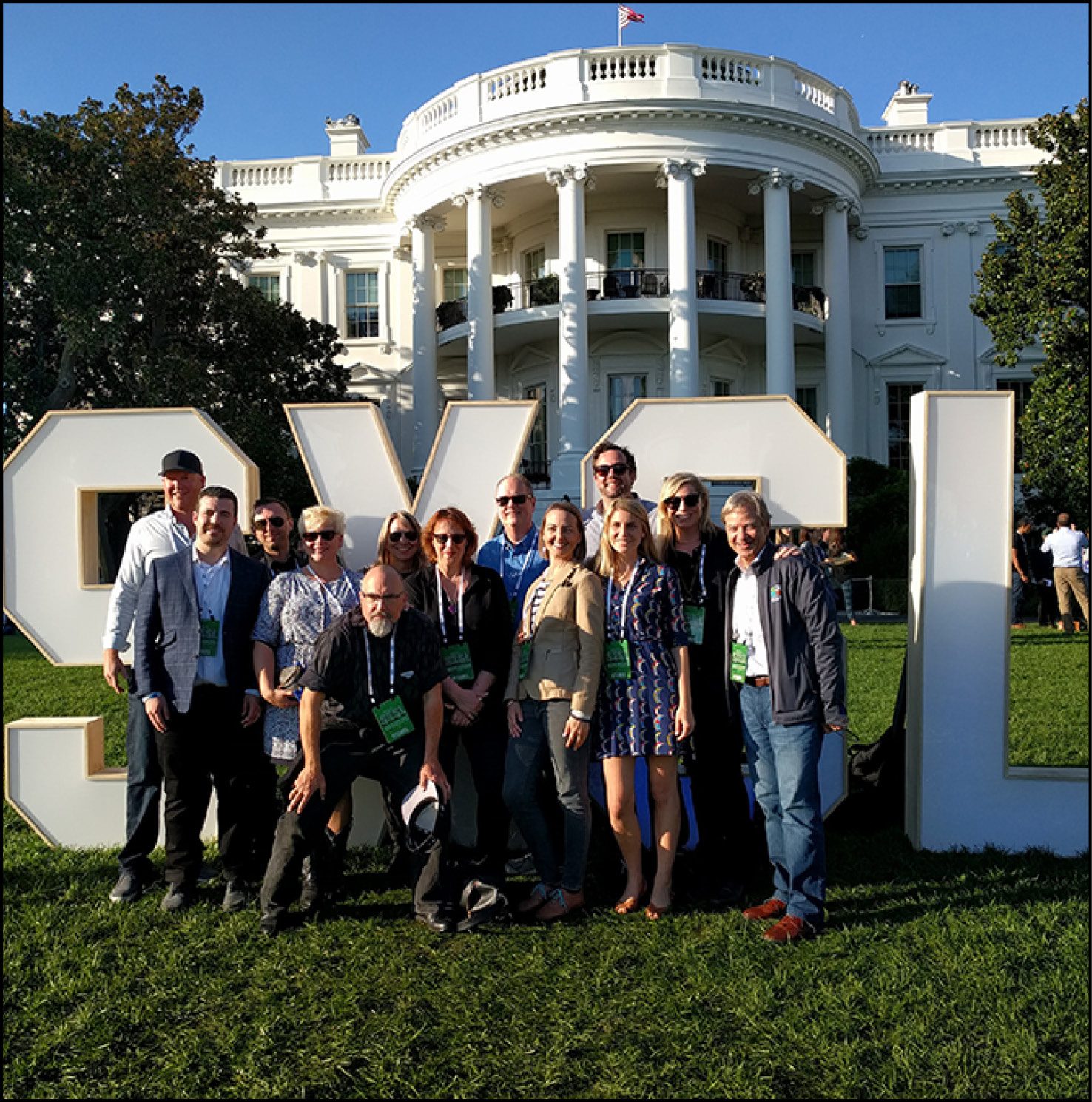
SXSW Staffers at SXSL. Photo courtesy of Ellen Burris
South by south lawn, Say What!?
“Whenever I hear people make gloomy claims about how America is on the downswing, They're either out to promote themselves, or talking about some alternate reality. Think about it -- if you had to choose any time in the course of human history to be alive, you'd choose this one. Right here, right now, right in America.
New technologies and new innovations are transforming the way we live, opening up incredible opportunities to create, to discover, and to do what we never thought possible.
At the same time, we have to navigate these changes in a smart way. They also can be disruptive, even scary -- and sometimes, they leave folks behind.
Our task is to come together and build a future that's more inclusive, tolerant, and full of opportunity for everybody. And I've never been more optimistic that we will.
As President, I've spent the last eight years finding the best people to help us meet that challenge. People who reject cynicism. People who turn change into a force for good. People who believe that, no matter who we are, where we come from, who we love, or what God we pray to, we -- the people -- can create a world that's worthy of our brightest hopes.
So today, I'm inviting a bunch of these folks to my backyard for South by South Lawn.
Much like the festival I dropped by in Austin earlier this year, SXSL is, at its heart, a call to action. The folks out on the lawn today are artists, creators, entrepreneurs, and innovators who will share how they've used their unique skills to engage their communities in making the change they want to see -- whether it's curing cancer, fighting poverty, empowering women, and so much more.” - Excerpt from email written by President Barack Obama and included in official White House press release announcing SXSL.
October 3’s first-ever South by South Lawn event proved to be a huge success. Attendees learned, listened, connected and brainstormed — what more can you ask for in an afternoon at the White House? At my end, four of the most important lessons that I will remember from this amazing experience are as follows:
Partnerships are everything. SXSL happened as successfully as it did because some relatively odd bedfellows (including two Austin-based companies, SXSW and C3) combined their talents for a common goal. Yes, it is amazing what can happen in a city like Washington D.C. when petty differences are suspended, and people work together to achieve the greater good.
It all comes down to weather. Given that the Monday, October 3 weather in Washington D.C. was spectacular, luck also played a large role in the success of SXSL. The warmth and blue skies were a large contrast to the cool and rainy conditions of a few days earlier. Of course, it’s hard to ignore the significant irony here — the perils of climate change serve as the focus of the powerful Leonardo DiCaprio documentary “Before the Flood” that ended the evening.
“Better is good.” This was a phrase that President Obama mentioned in his conversation about climate change with Leonardo DiCaprio and Texas Tech scientist Katharine Hayhoe. This thinking reflects eight years of political realism and the concept that you probably can’t achieve all of your goals as quickly as you would like. But, the phrase also reflects an optimism that small steps are the solution to accomplishing big things.
The audience is the answer. Speakers at the event packed significant star-power. But the most innovative thinkers were the 2000+ attendees, people whose energy and creativity will pave the future. In this sense, SXSL re-affirmed that the faces in the crowd (not the figures on the stage) are the ones whose actions will both build and inspire a better future.
For those who were not able to attend SXSL, you can re-watch the stream from the event at whitehouse.gov. Will there be another similar gathering in the future? Maybe so, maybe no. But for now, let’s just take some time to digest all of the ideas and connections from the first SXSL.
SXSW.com | november 2016 | SXSWORLD 9




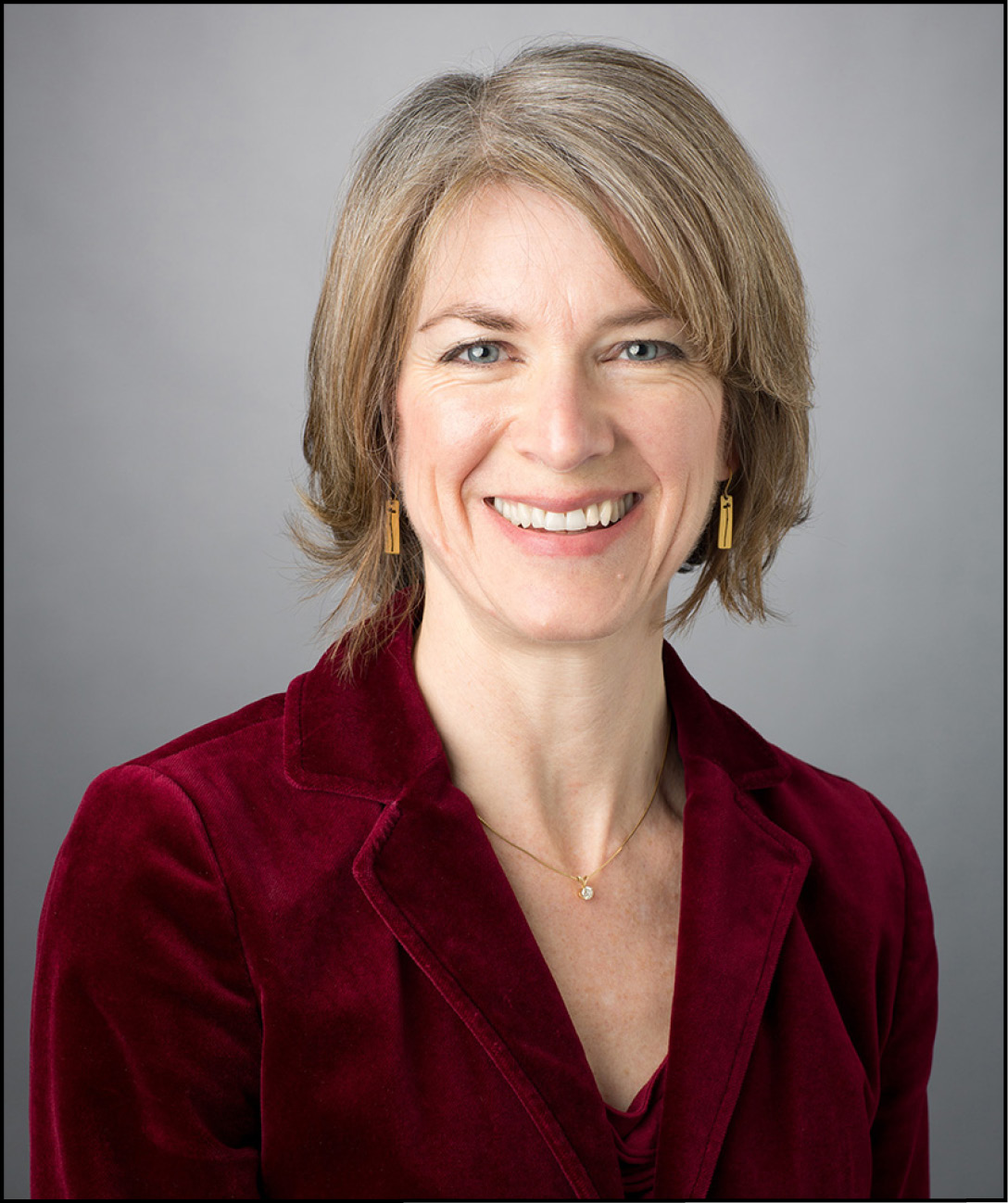
Dr. Jennifer Doudna. Photo by Sam Willard
From bacteria to humans ...
A Gene Editing
Revolution Has
Transformational
Potential
By Cisco Gilliland
SXSW.com | november 2016 | SXSWORLD 11
10 SXSWORLD | november 2016 | SXSW.com
products. DuPont, an early investor, has a multi-year agreement across several fields, from agricultural and industrial segments to human and animal therapeutics. Caribou is also collaborating with a U.K. company, Genus, to target a debilitating virus in pigs, cattle and other livestock, and with Novartis to address a range of medical needs, from vaccines to eye care.
On the surface, this technology sounds a lot like an extension of the GMO (genetically modified organisms) work being done by corporations such as Monsanto, but the processes are quite different. GMOs are created when a gene from a radically different species is introduced, such as an antifreeze gene from a cold-weather flounder inserted into a tomato to protect it from frost. CRISPR, on the other hand, edits the existing genome rather than inserting foreign ones. This technique can be just as successful as GMOs in achieving the desired outcome, potentially with a much lower price tag, which might eventually make current GMO techniques (and the controversies surrounding them) moot.
One scientist whose work has been fueled by Doudna’s discovery is Sarah Richardson, a keynote speaker at SXSW Eco 2016. As a child, Richardson looked to the stars and science fiction for inspiration. Now as chief scientist at a startup called Ignition Genomics, she still has the same sense of awe about the invisible world teeming all around us and calls herself the “bacteria whisperer.”
In 2013 and 2014, Richardson was working at the U.S. Department of Energy's Joint Genome Institute, close to Doudna's labs at UC Berkeley. The two met regularly to discuss their projects, and Richardson now leverages CRISPR-Cas9 to help accelerate her efforts to coax bacteria to create products such as fuel, pesticides and industrial cleaning agents with broad environmental implications. "There are bacteria out there now that can pull heavy metals from water,” she says. “We just need to make it happen faster."
The CRISPR-Cas9 discovery has also put billions of dollars of potential profits into play. The massive financial stakes have fueled a patent dispute between two groups of scientists, one from Doudna’s UC Berkeley lab, and another from the Broad Institute of the Massachusetts Institute of Technology and Harvard.
In terms of both animal and plant genomes, the ethical implications of CRISPR are every bit as thorny as these financial struggles. Use at the embryonic stage is particularly troubling. “Human germline engineering,” Doudna and 18 other prominent scientists and ethicists wrote in an open letter in Science in 2015, raises the specter “of concerns about initiating a ‘slippery slope’ from disease curing applications toward uses with less compelling or even troubling implications.”
For her part, Richardson is less concerned about what she views as far-fetched dangers: “The risks that get most attention are the main plot points in thriller science-fiction-action movies.”
The real threat to humanity, Richardson argues, is not the prospect of perfect uber-humans, but lack of scientific progress and financial backing for the time-consuming, detail-oriented labor involved in scientific research. “When the media says we can now create designer babies and we cannot, we're not only stealing thunder from the future. We're also investing in skepticism about the rate and progress of scientific advancement.”

t was only a few years ago that Dr.Jennifer Doudna, along with Emmanuelle Charpentier, her lab partner at the time, devised a revolutionary process for gene editing. The process, called CRISPR-Cas9, has since taken scientists and investors by storm, creating a media frenzy in the process with cures for cancer, cystic fibrosis or Alzheimer’s; disease-free crops; designer babies for the rich and entitled (and maybe even unicorns) among its possible applications.
Like so many major breakthroughs, this seemingly radical shift is actually the next step in a continuum that has been unfolding for years. “Genome engineering is actually not new; it's been in development since the 1970s,” Doudna noted in a 2015 TED Talk. “We've had technologies for sequencing DNA, for copying DNA and even for manipulating DNA. And these technologies were very promising, but the problem was that they were either inefficient, or they were difficult enough to use that most scientists had not adopted them.”
CRISPR, short for clustered regularly interspaced short palindromic repeats, is a segment of DNA derived from bacteria such as the one that causes strep throat, and Cas9 refers to a particular protein. Paired up, the protein and the DNA segment act like a surgical tool that can recognize and cut strands of DNA, allowing scientists to effectively remove or change existing genes within an organism.
The CRISPR discovery has radically accelerated the pace of genomic research. One reason is its simplicity. Doudna compares CRISPR to running a software application, versus previous genome engineering techniques, which were more like rewiring a whole computer. Also, genetic changes, once introduced, can be carried down through generations—so-called “germline” transformations. Now, experiments requiring mice with specific gene modifications can be conducted over a matter of weeks or months, rather than years.
That speed has led to an outpouring of CRISPR-derived research in both the private and public sectors, ranging from environmental uses to agricultural and medicinal applications. A pathologist at Penn State University successfully used CRISPR-Cas9 to edit out the genetic base pairs that make white button mushrooms turn brown. Researchers have used CRISPR to make both tomato and cotton plants resistant to common diseases. Chinese scientists even claim (the results have not been made public) to have used the CRISPR tool to treat lung cancer.
Doudna herself has co-founded a startup, Caribou Biosciences, which has partnered with several corporations to develop new
Dr. Jennifer Doudna will be an Interactive Keynote speaker at the 2017 SXSW Conference.



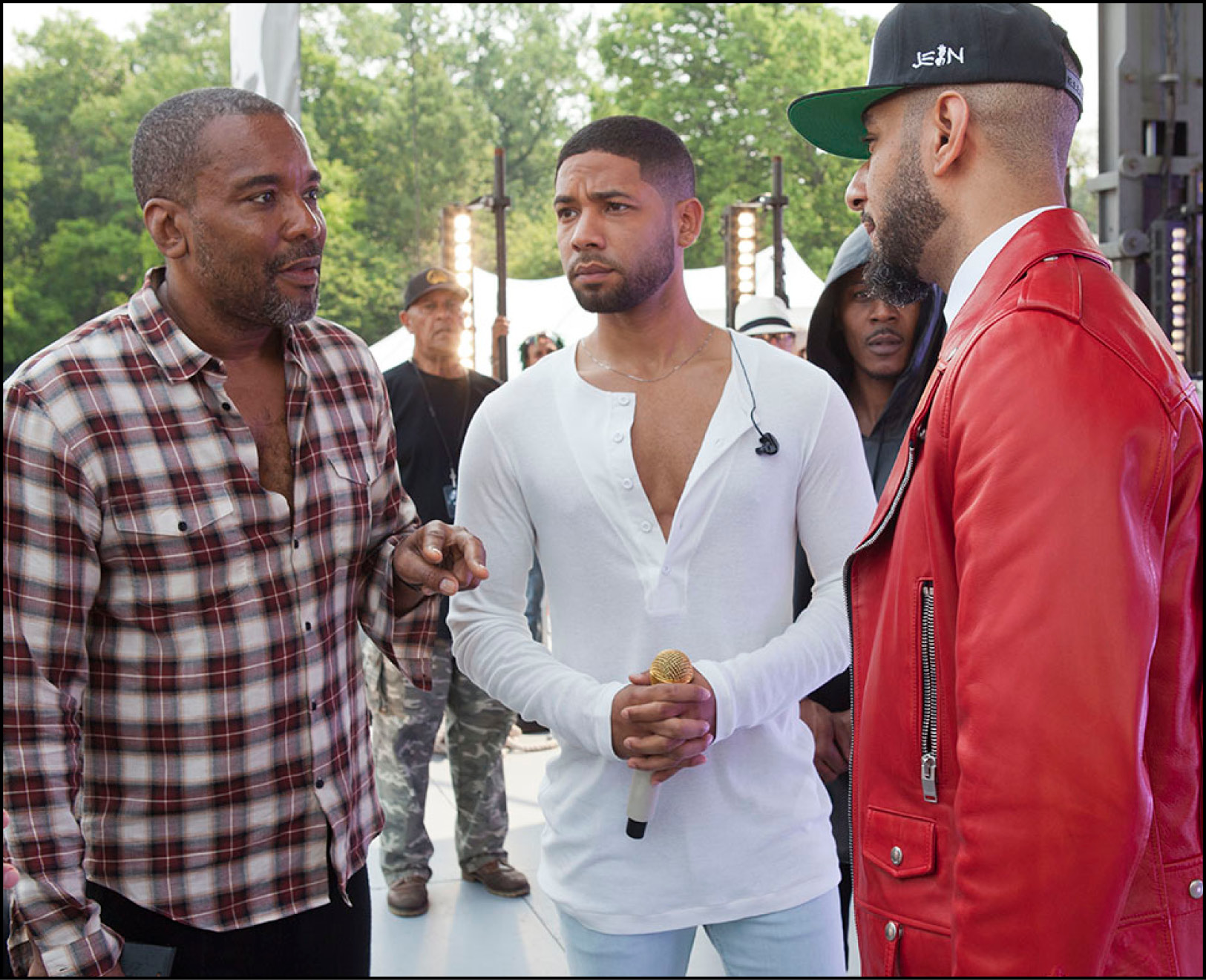
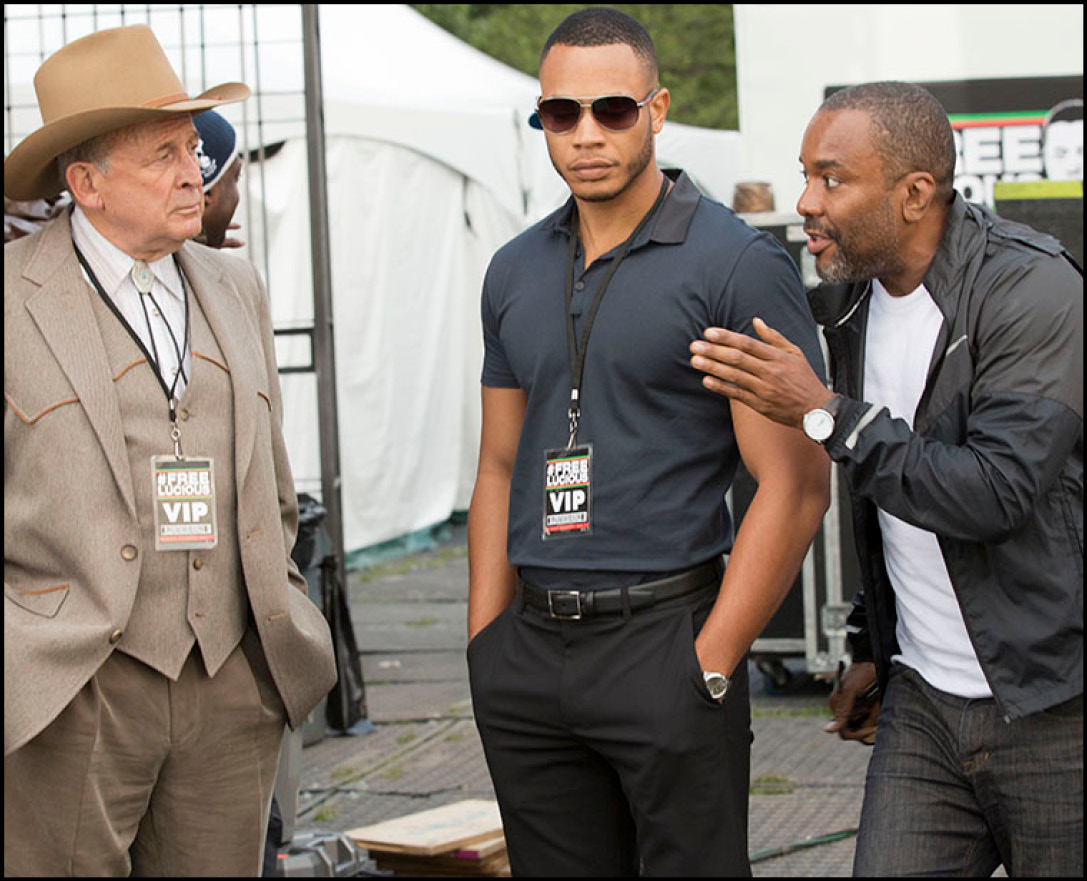
Photo by Chuck Hodes
Photo by Chuck Hodes

Photo by Chuck Hodes
Discovering Lee Daniels
How the Groundbreaking Filmmaker Does It His Way By Danielle Nussbaum
“We didn't know it was serious or a piece of art until we took it up to Sundance & the white people were like <GASPS>.”
SXSW.com | november 2016 | SXSWORLD 13
12 SXSWORLD | november 2016 | SXSW.com
Daniels grew up in West Philadelphia, the youngest of five. Dad was a policeman; mom held various jobs. Daniels picked up a hardcover copy of Edward Albee’s Who’s Afraid of Virginia Woolf? in a public library when he was eight years old and would make the neighborhood kids act it out on his stoop. “I didn't know it was directing but I guess it was,” he recalls. “They would do anything I said.” (This would serve him well, as he has famously shouted at everyone from David Oyelowo to Oprah Winfrey while directing.)
Daniels moved to Hollywood in his teens and directed plays at local churches while working at a nursing staffing company .By the age of 21, he had opened his own staffing agency and sold it for millions. He then became a casting director (notably working on Purple Rain), and talent manager before producing his first film, Monster’s Ball, for which Halle Berry won an Oscar in 2001.
His directorial debut, Shadowboxer, featured an unorthodox mother/stepson duo of assassins (Helen Mirren and Cuba Gooding, Jr.). Audiences truly began to take notice with the based-on-a-true-story 2009 drama Precious, which earned Daniels a Best Director Oscar nomination. When he first brought the film to Sundance,
he sat in the hush of the darkened theatre and thought it was a bomb. “On 125th street at the Magic Johnson theater, it played like a comedy,” he says. “We didn't know it was serious or a piece of art until we took it up to Sundance and the white people were like <GASPS>.” Daniels dissolves into laughter.
He went on to helm The Paperboy and 2013’s Lee Daniels’ The Butler, featuring an all-star cast led by Forrest Whittaker that earned over $175 million at the box office. Then Daniels set his sights on TV and blew up the zeitgeist to the tune of 17 million viewers with music mogul soap Empire, currently in its third season, which he co-created with Danny Strong.
Before you can become a legend though, you start out as a man, and like most, Daniels has struggled, fighting such demons as drug addiction, racism, homophobia and childhood abuse. But it’s the way in which he bares his struggles that has had such a profound effect on his work—and thus on his audiences. “I'm gay. I'm black. I realize that the fight has been so hard on me because of the color of my skin. And because I've been so open and honest about who it is that I am,” he says. “It's very powerful to live in your truth and to work in your truth. And actors know it's your truth so they roll along with you. So I'm able to get Queen Latifah to do some things she ordinarily wouldn't do.”
Latifah—along with Jude Demorest, Ryan Destiny and Brittany O’Grady—stars in the modern Dreamgirls drama, Star, which is set to premiere on Fox in early 2017. Daniels, who created the show with Tom Donaghy, wrote and directed the first two episodes.
“In Star, you get early me … what happened when I first landed in Hollywood,” he says. “I've talked about everything in my life except that part of me that I'm not proud of, stuff I did to survive, so creating and busting down doors and doing things maybe that weren't legal ... Exposing that is healing for me.”
Daniels, who grew up hooked on the TV magic of Norman Lear, longs for that more politically incorrect era of storytelling and worked hard to ground Empire in a place of uncomfortable truths. Still, Daniels’ transition into network television, where he suddenly
wasn’t the only one running the show, was a bit of a rude awakening. “When I jumped into television, I didn't understand the idea of collaboration, because as an independent filmmaker, you are the boss. I never took ‘no’ for an answer and I always did it my way,” he says. “So I was thrown into a body of suits with Fox; that was a first for me. That was sort of jarring.”
Now that Daniels has proven himself with Empire, the process with Star is smoother. That is, except when it comes to casting. “I was really excited about Empire because at the time, no network wanted to do black shows,” he says. “Now I can't even get black actors right now for my new show. It's crazy. Everybody's already employed.”
Lee Daniels will be a Film Keynote speaker at the SXSW 2017 conference.

ee Daniels—writer, producer, director, actor—is in Atlanta working 16-hour days on his new Fox series, Star, and jumps on the phone enthusiastically, declaring: “I don’t know what to talk about first!” But ask him about his favorite part of filmmaking, and the gregarious showman falls uncharacteristically quiet.
“I really like discovery,” he finally says, and pauses again, considering his words carefully. “I find it sometimes in my writing. I find it sometimes in my directing. I find it sometimes in my producing. Whether it's a Gabourey Sidibe and I'm directing, or a director I discovered like Mark Forster for Monster's Ball, or whether it's letting America know that Taraji P. Henson was always our Meryl Streep in the ‘hood. What I like most is being able to take pride in introducing talent or new ideas to the public.”
To Daniels, introducing the world to the new is exciting; to the world, meeting Daniels has been new and exciting at every turn. And though the 56-year-old has no formal filmmaker training, he has gone on to create vividly emotional portrayals of the African-American experience on screens both big and small.



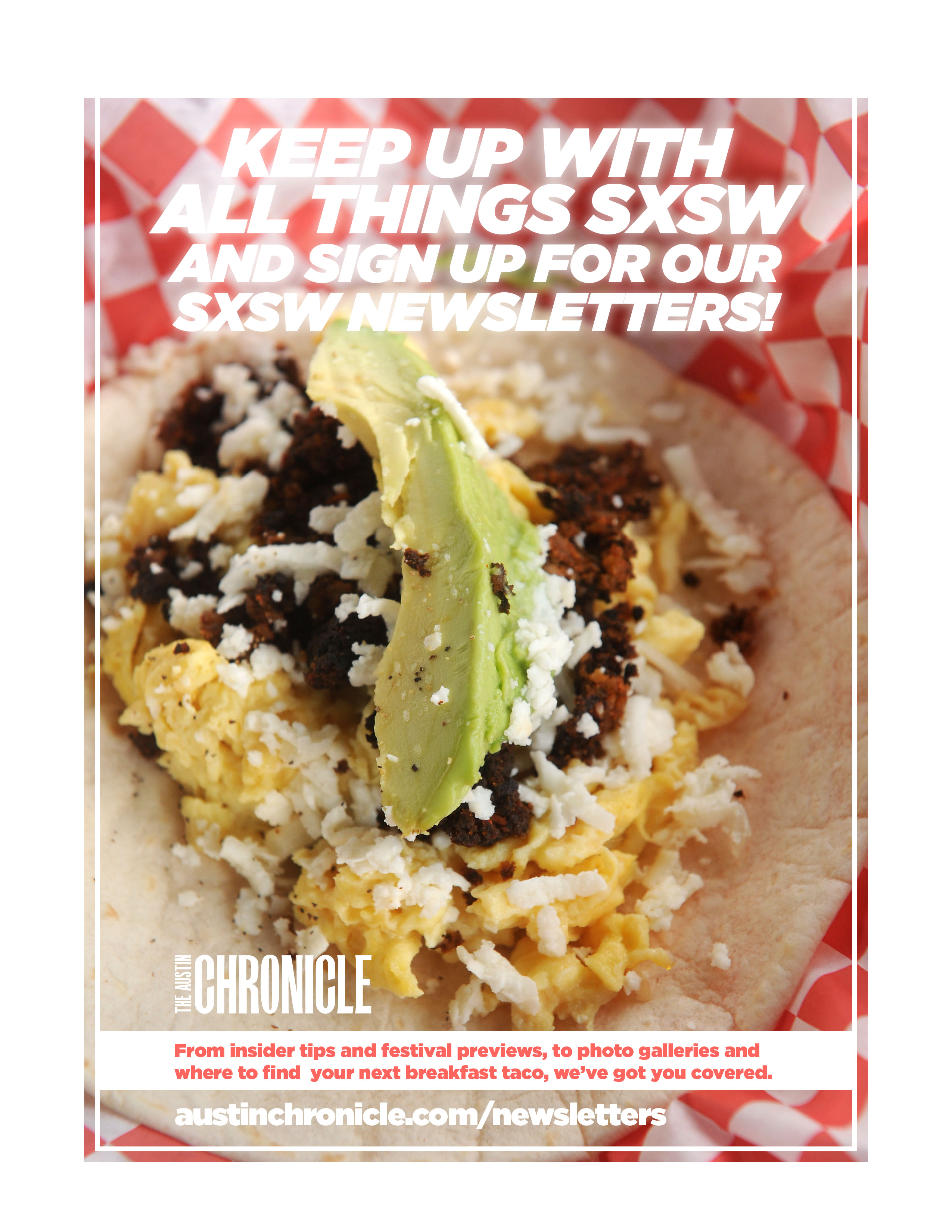

Nadya Tolokonnikova will be a Featured Speaker
in the Music Influencers Track at SXSW 2017.
UNMASKING THE PAST, PRESENT AND FUTURE OF PUSSY RIOT
SXSW.com | november 2016 | SXSWORLD 15
More recently, a video for a song called "Chaika" appeared, protesting Russia's prosecutor general Yuri Chaika and accusing him of corruption. It’s a stylish piece of film with professional production—a far cry from the ad-hoc, DIY, though always well-planned guerrilla protest performances that marked Pussy Riot’s original incarnation.
Musically, it is also valid to ask, what is Pussy Riot? The "Chaika" song blends hip-hop rhythms, trip-hop noir, and jazzy horn blasts. It’s far more an electronic track than punk. The political message remains strong, and clearly the point of making the music and video is to deliver a message. Is Pussy Riot then a new form of folk music that is producing songs about and for the people, without profit or commercial purpose? Are they kindred spirits to Billy Bragg, whose musical performances are never far away from social and political insights, and shared freely with his audience? Maybe they are sisters-in-arms with guerrilla artist Banksy—except that while decrying the art world, that British artist makes millions. Perhaps they are offspring of the Sex Pistols’ original cry for social equality, except that the Brit punks were damaged by drug drama and hounded by police and managerial issues until they split up at the height of their notoriety.
Pussy Riot’s trademark hoods, which protected their anonymity, came off not due to any choice, but because the authorities unmasked Tolokonnikova, Maria Alyokhina and a third member, Yekaterina Samutsevich, who also went through the terrifying ordeal of arrest and sentencing but had her prison term lessened to a suspended sentence. The three were forced in front of the public eye and cameras in a Moscow courtroom. Yet, they looked far from afraid and remained on message, as the political campaigners put it. Sleekly produced music and stylish videos are one thing, but it’s motive that defines Pussy Riot as a powerful political force, not just a pop culture effort bandying around suave socialist ideas and non-commercial ideals.
Pussy Riot formed in 2011 from a group of young women sharing a modern, progressive social agenda, LGBT rights and anti-fascism at heart. The first sentence of the group’s Wikipedia page reads, “Pussy Riot was a Russian feminist punk rock protest group based in Moscow” — was. In a world of Kardashian aspirations and fake reality, where the human race seemingly blindly burns through the planet, Pussy Riot and their refusenik kind are more important than ever.

o misquote John Lennon, for a while Pussy Riot was bigger than the Beatles. At least in the winter of 2012, after video of the Russian group’s audacious agit-prop “Punk Prayer” musical/performance piece went viral on the Internet, the group became infamous overnight. The images of five young women wearing knitted masks, jumping up and down and performing in front of the altar of Moscow’s Christ the Saviour Russian Orthodox cathedral, was either shocking or stimulating—or both. Either way, they had the world’s attention.
The full title of the song they performed that fateful day translates as "Punk Prayer – Mother of God, Chase Putin Away!” It was anti-Putin, anti-church, and an act that defied and decried both church and state. It was punk rock and riot grrl venom tied up with a socio-politico agenda, and “Anarchy in the USSR” seemed probable—for a minute or two, at least. If you followed the original story, you know how the Putin government and Russian Orthodox Church responded.
Just in time for this year’s American Presidential elections, the Pussy Riot name is back in the headlines with the release of three provocative new songs and accompanying videos. Spearheading this latest activity is Nadezhda (Nadya) Tolokonnikova, who has become the most easily identifiable member of the group—if indeed it is even a formal group now, as Tolokonnikova’s rise as the public face of Pussy Riot has caused a considerable rift within its ranks. But considering that it was she and fellow member Maria Alyokhina who were convicted of "hooliganism motivated by religious hatred" in the cathedral case in March 2012 and sentenced to two-year prison sentences, Tolokonnikova has weathered the brunt of the Russian hammer’s retaliation.
If the prison sentence wasn’t shocking enough, when news of the women’s transfer to separate Siberian labor camps surfaced, shock turned to horror. Tolokonnikova’s subsequent hunger strike, decrying conditions in the camp, pushed her further to the forefront as Pussy Riot’s leader. Even speaking from the labor camp, she was a photogenic spokesperson who refused to back down. Far from silencing her, the jail sentence gave her a bigger voice and yet another cause: prisoners’ rights.
So what and who is Pussy Riot in 2016? Is it a group, one person, or several individuals—each performing at will under one banner of social justice? What began in 2011 as a dozen or so girls gathering together to voice their opposition to then prime minister Vladimir Putin and social injustice in their homeland, now seems splintered and tainted by outside interference, such as the group’s defense lawyer attempting to copyright the name as a brand. To market what? Pussy Riot t-shirts and bobbleheads?
Since her release from jail in December 2013, two months shy of the full sentence, Tolokonnikova hasn’t shied away in supporting LGBT, feminist and free speech issues in the U.S., Russia and internationally. In 2015, Pussy Riot released an English-language song and video, "I Can't Breathe," in response to Eric Garner’s death while he was being restrained by police officers in Staten Island, New York.
By Linda Laban



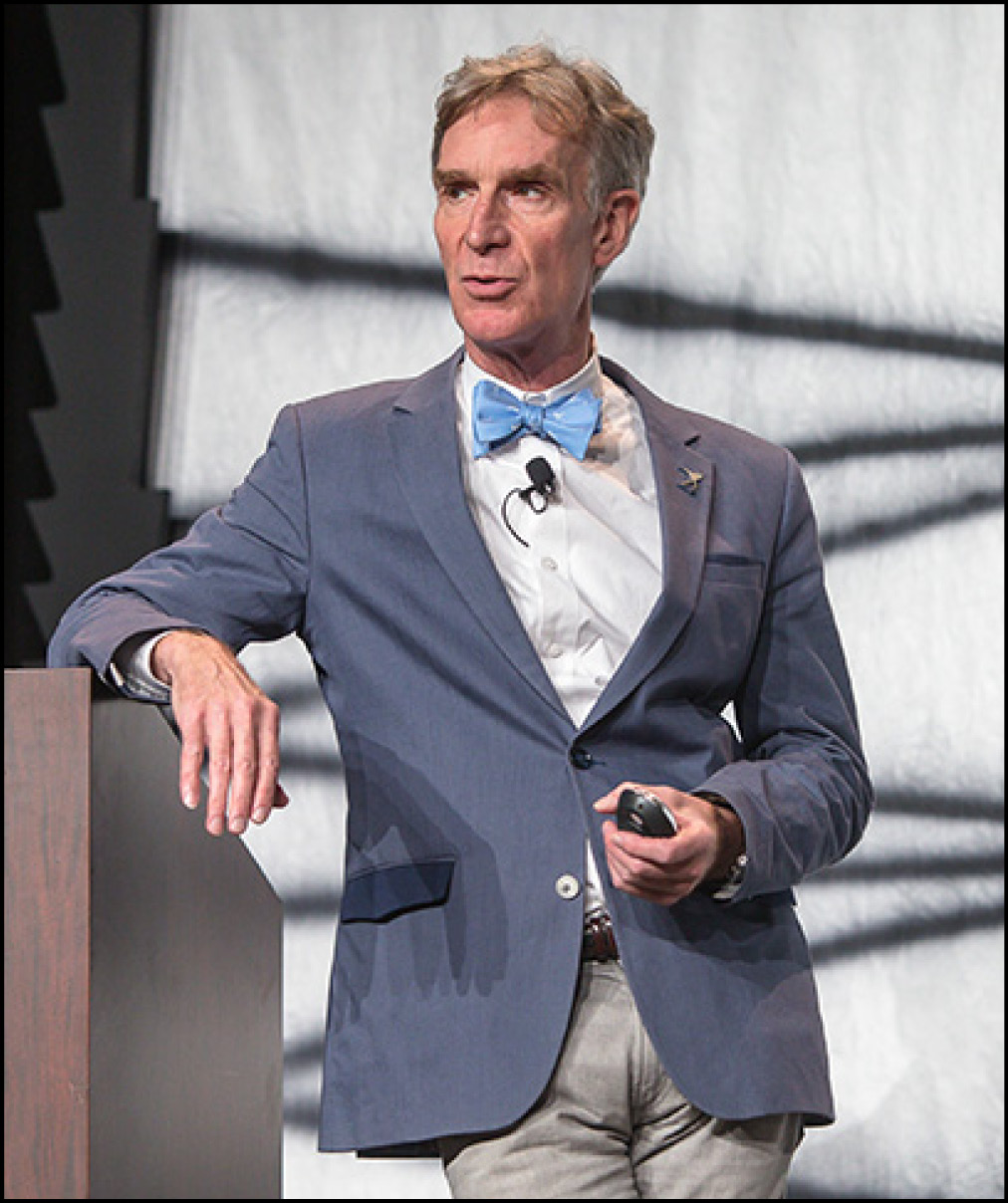
Bill Nye: SXSW Eco 2016 Keynote. Photo by Steve Rogers

When It Comes
To Climate
Change Action,
The Time Is Nye!
By Rob Preliasco
Design Maestro,
John Maeda
— On Why The Real
World May Be A Better
Classroom Than
Academia. For Now...
SXSW.com | november 2016 | SXSWORLD 17
16 SXSWORLD | november 2016 | SXSW.com
We have the technology right now, Nye said, to power 130 of the world’s countries renewably. This would be done mostly with wind and solar energy, and some tidal and geothermal energy, and without building any new nuclear power plants.
“Texas gets 10 percent of its energy right now from wind, without subsidies,” Nye said. “In the state of Texas, we could run the whole thing renewably right now if we just decided to do it.”
And why don’t we decide? One reason is climate change deniers, both in Congress and at the head of powerful corporations. They’ve been very successful, Nye said. “They’ve introduced this idea that scientific uncertainty, plus or minus two percent, is the same as plus or minus 100 percent.”
It’s not all vested interest, either. There are intelligent deniers, Nye said, and ones that do not have self-serving motives. For many people, particularly those without much scientific knowledge, it can be hard to imagine that one’s individual actions on such a big planet can have global consequences.
The good news? “Very, very few people who are 17 deny global warming,” Nye said. To the millennials in the audience, he added, “We’re at a tipping point. Your generation is going to be on this … you’ve got to play the hand you’re dealt. Yes, you could have anger toward people like me [in older generations], but we all got here together, and we’ve all got to solve this problem.”
Nye concluded his talk with a call to optimism and a lesson from space exploration, the pinnacle of optimistic scientific endeavor. In science as in society, he said, it is necessary to do everything at once: address climate change, improve global living conditions and strive to answer the fundamental questions of human existence. Why are we here? Are we alone? The scale of the cosmos can be overwhelming but the fact that our brains can grasp it at all is astonishing, and if we can conquer that, we can conquer anything:
“And with our brains, my friends, we are going to solve these problems. We are going to address climate change and we are going to—dare I say it?—change the world!”
Once he formally made the leap from academia to the corporate/VC sector, he also saw what he’d suspected for some time: That in the business world, things move exponentially faster. Maeda says an “aha” moment came when he first saw Jack Dorsey’s Square, the device that attaches to smart phones, laptops and other electronics, allowing the owner to swipe credit cards and become, essentially, a one-person vendor:
“When this came out, it struck me: ‘Wow, you can be a professor in a university classroom, but all it takes is one smart professor to stand outside in the park, or anywhere outside the school, and gather a bunch of students and do credit card swipes.’ They (students) didn’t need the university president or a professor to teach them how to do it.”
But even as they’re exploring and discovering outside of lecture halls and studios, Maeda emphasizes that aspiring designers must keep an eye on the human element: “I guess over time I’ve realized that what design is really about is connecting with people. Yes, you can make it perform better, you can make it feel better, but who are you doing this for? People ... But maybe you don’t ‘know’ that person, and if you aren’t inclusive of the people you’re making it for, you’re going to make something that doesn’t really work …”
As an example, he cites the Snapchat app that finds a user’s face and puts it in a mask or a framework. “But, if you’re African-American or Mexican, it can’t find your face,” Maeda says. “And that’s because the people who made it tested it on their own faces. And there weren’t a lot of people with darker skin who made it, so then (if you’re a person of color) the Snapchat app couldn't find ‘you.’ ”
It is at this intersection of design, technology and inclusion that Maeda has discovered his latest classroom. And here, he’s setting his own learning curve: “At this point in my life, I’m not just interested in designing cool things; I’m interested in asking who’s designing these things, and who do they know when they’re designing them? Do they know who they might be excluding in the process?”
However, he concludes, “It’s not just about social justice. When the subject turns to ‘the right thing,’ I like to think more that it’s just pragmatics. It’s just business. If you’re serving N customers, and there are Y customers you’re not reaching, why not design it for N + Y?”
Now that may be design at its most Darwinian.
John Maeda will present his “Design in Tech Report 2017” at SXSWedu 2017. For more.

ry all you want to find a less prosaic way to say it, but science advocate and television personality Bill Nye’s essential message is: You can save the world. Yes, climate change is here and the threat is severe, but the technology we need to survive and scale it back is just about here, too. Innovations like more efficient solar panels, longer-lasting batteries and new desalinization techniques are ready to be either invented or refined, perhaps by you, or by someone who is a college student or child today. Either way, it’s going to take a global effort, and education will be crucial.
That is the message Nye delivered at his SXSW Eco Keynote on October 12 called “The Optimistic View for Merging Energy and Climate Policies.” The pro-education, pro-science message is perhaps not a surprising one from Nye, the man who expanded the basic scientific knowledge of countless millennials with his Bill Nye the Science Guy television show in the 1990s. In his keynote, he focused little on what is at stake in our changing world—few dire-looking graphs, no pictures of threatened polar bears—in favor of what we can achieve in the face of this challenge.
“You could, when faced with this global warming and the climate change associated with it, run in circles screaming! But that has proven completely ineffective,” he said.
There are two things driving the climate to change, Nye said: the Earth’s thin atmosphere and our advancing population. By 2050, nine billion people will be here, “and they’re all going to want to eat something and drink something.” The solution to the problem will have three parts, he said: clean renewable energy around the world, universal access to safe drinking water and universal access to the Internet, with the opportunities for education and commerce that it represents. That’s a tall order and will certainly be a key challenge of our time, but Nye thinks it is possible.
“We can do this,” he said. “We can get to work, have new sources of energy and new ways to store energy, and we can change the world.”
And he emphasizes the need for a global effort. Discussing his WWII veteran parents, Nye said that “the greatest generation” solved a worldwide crisis in five years. We could do something similar— particularly today’s young people, if they are educated and motivated. His message for them is that scientific breakthroughs are within reach and so are, probably, rich rewards.
“The [solar panels] that are being produced now are nearly 30 percent efficient,” he said, “and it sure looks like we’ll be able to make solar panels that are as good as the ones on spacecraft and better than that at 40 or 50 percent efficient. What if they were 70 percent efficient? And what if you were the one that invented it, or your student invented it? He or she would—dare I say it?—change the world! And not only that, you tell these kids, ‘You’re going to get rich!’ Like Bill Gates rich! Like board of directors of Ikea rich.”
esign is part of nature and in every manmade object we encounter. It’s simple and complex, elementary and heady. Yet the bottom line is, if something isn’t properly designed, then it doesn’t work for the user. Nature knows this and responds accordingly.
Prominent designer and author John Maeda believes that today’s designers, particularly in the tech field, are starting to follow that lead. They’re learning to design for “inclusion,” to engage the largest possible range of beneficiaries. And many of them are learning this outside the classroom. Kind of like … nature.
“Whether design for performance or design for emotions, it is extremely valuable for corporations and VCs today … and I think the education world is challenged to understand what that is, what that means.” says Maeda, Global Head of Computational Design and Inclusion at Automattic Inc., the web development firm best known for WordPress.
For years, design at its highest levels has been taught—and learned—within the confines of academia, explains Maeda, formerly a tenured professor at the MIT Media Lab, and then the president of the Rhode Island School of Design (RISD) for six years. But lately, Maeda has found more satisfaction designing (and responding to design problems) in the real world.
Maeda believes that while design in technology is advancing at warp speeds, the teaching of design is not. He thinks that aspiring designers may well learn more by experimenting in the workaday world. And of course, that hinges on a more democratic view of its definition:
“Most people don’t know what ‘design’ is—or they would like to know. But there’s always a different answer. It can mean too many things. It can mean the design of your hairstyle, the design of your shoes, the design of your app, the design of your logo, the design of your food … When you think about why it’s important, (you realize) it’s about being able to make something better that was already good. It’s either going to be technically better, it’s been designed to perform better, or its design is more emotional, so that it makes you feel better.”
Maeda’s quest to broaden this view of design was part of a major career move. In early 2014, he left RISD to join the Palo Alto-based VC firm Kleiner Perkins Caufield & Byers (KPCB) as a design partner, before moving to Automattic in August.
“I was in education for 12 years,” says Maeda, “and I decided to leave because I began to question it all … And by spending three years in VC, it has changed my whole perspective. But it’s kept me feeling, knowing, what I had cared about all along.”
By Shermakaye Bass




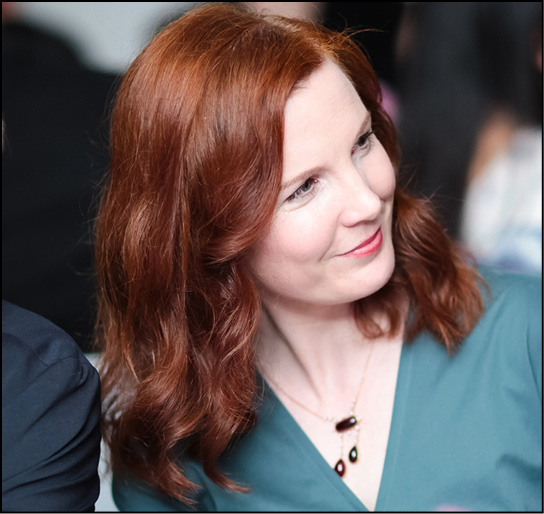
Click to hear an audio excerpt of
Kate Crawford speaking at SXSW 2016.

Kate Crawford
Why Equality and Social Impact Must Be Part of the A.I. Future
By Susan Elizabeth Shepard
SXSW.com | november 2016 | SXSWORLD 19
Creating the protocols for accomplishing these tasks from scratch is a massive undertaking made even more difficult by the opacity of some systems, like deep neural nets, where the way in which they work isn't yet understood. Professional organizations and conferences such as Fairness, Accountability, and Transparency in Machine Learning (FAT-ML) are places where these questions get hashed out. "We've got some amazing people who are really now just starting to come together and think about how do we build fair systems? And that's a really new question. That's not a question that we've had to face before," she says.
Crawford likes the cross-disciplinary audience available at SXSW. "You have data scientists talking to artists talking to social scientists talking to philanthropists talking to designers," she says. "That's a really nice space to have conversations about how we make these systems better."
Last year, the Future of Life Institute, whose board members include Stephen Hawking and Elon Musk, released an open letter articulating their priorities for AI research, with an accompanying document that closed with a warning about the dangers of a superintelligence that escapes human control. Crawford considers this something of a luxury concern.
"When it gets down to it, being concerned about the creation of a superintelligent AI that will dominate and exploit humanity is something that people who are already very wealthy and generally white and male tend to worry about, because if you want to look at technology that's creating domination and producing unfair results, we already see that happening," she says. "The things that are currently already affecting marginalized populations are of a much bigger concern to me than killer robots of the future."
But of course, one of the reasons that imagery is so prominent in our minds is because of the cultural representation of AI, which is why "Skynet," from the Terminator movies, is such effective shorthand for a malevolent superintelligence. That's why Crawford would love to see culture makers in the audience when she speaks:
"I would love to see Sam Esmail think about the next Mr. Robot as being about what will happen in society when AI is part of everything we do … where it's like the water pipes, it's the infrastructure, it's the traffic lights, it's phones, it's when you walk into a school, when you walk into the shop, when you walk in the street, it's omnipresent.”
Kate Crawford will be a Featured Speaker in the Intelligent Future Track at SXSW 2017.
efore she became a prominent researcher called on by theWhite House and Microsoft for her analysis of the social and ethical implications of artificial intelligence (AI) and machine learning, Kate Crawford was a self-described "music nerd" as both a fan and a musician. Her experience as a performer and television host in her native Australia explains why she's such a dynamic speaker, as she regularly makes the case for why those creating and utilizing machine learning systems should be taking their cultural impacts into account.
Crawford has served as co-chair for the White House's AINow symposium, emphasis on the "Now." Her primary concern is not with what might happen but what is already happening with AI, and specifically who is being affected.
"If there's a big overarching theme that I think we really need to think a lot about, it's social inequality. How does AI contribute to or ameliorate social inequality?" says Crawford. "We're already starting to see these kinds of distinctions being made where some communities are experiencing the downsides more than others, but how is this already feeding into societies that already have issues with social inequality?"
As big data and machine learning play an increasingly large role in institutional decision-making, Crawford says issues of transparency and accountability have to be addressed, citing a ProPublica investigation that found black defendants in Florida were twice as likely to be wrongly predicted as “at risk of violent recidivism” by a risk assessment algorithm. This translated into real-world differences in sentencing and probation conditions, influenced by a tool whose workings defendants (and prosecutors) didn't grasp.
When untested systems and tools are rushed into social institutions without an understanding of their workings, the public trust is at stake. As continued interest and investment pours into AI and new applications arise, Crawford says that a highly visible, poorly functioning system can wreak much more damage to the field than a delay to make the system more fair. "What we've been seeing in what I would call almost precursor AI systems, we're seeing forms of sort of racial, class and gender bias, and that should concern all of us," she says.
A recent editorial Crawford co-authored with law and technology researcher Ryan Calo for Nature calls for establishing the means to measure the effect of AI on the populations in which it's being used. "There's a lot of money being spent on AI right now, a lot of research being done and a lot of new startups, specifically looking at the potential around applying AI in everyday life," says Crawford. "There's this huge gap in terms of thinking about what are the actual impacts of AI ... How do we assess them? How do we see and test and verify and measure the impacts on human populations?"



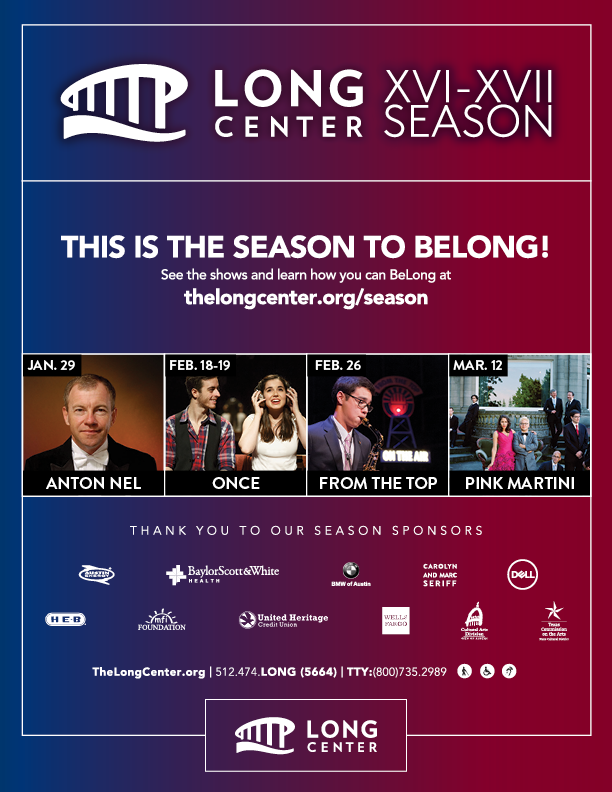
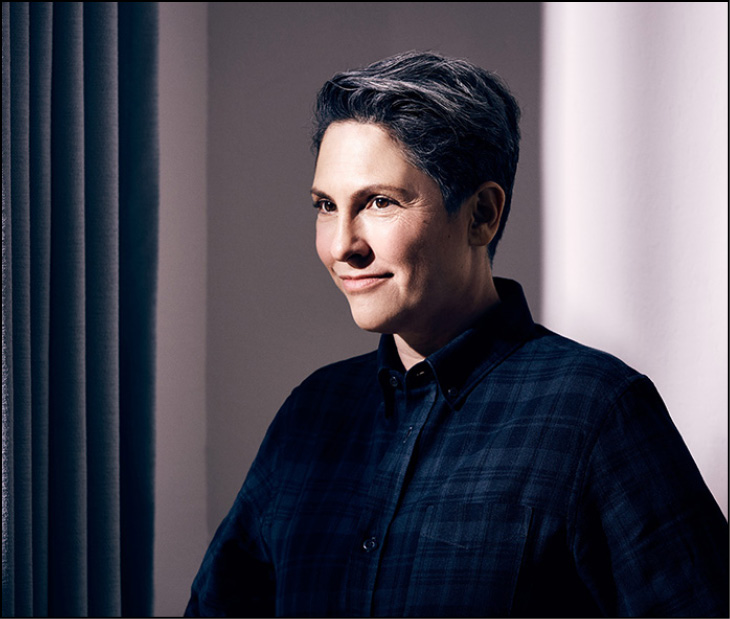
Jill Soloway will be a Film Keynote Speaker at SXSW 2016

The Solo way
Jill Soloway's
Transparent
Sense of Purpose
By Nigel M. Smith
SXSW.com | november 2016 | SXSWORLD 21
Before writing the pilot for Transparent, inspired by her father coming out as transgender, Soloway was already well on her way to becoming a television titan, having explored the thorny family dynamics that characterize Transparent over four seasons of HBO's Six Feet Under, as writer and co-executive producer. She also was show-runner for the second season of Showtime's United States of Tara, another series to center on brood dysfunction.
However, her first dabble into filmmaking set her back. Despite winning the best director award at the 2013 Sundance film festival for Afternoon Delight, a dark comedy starring her frequent collaborator Kathryn Hahn as a bored housewife who strikes up a friendship with a young prostitute, the critical reception was curiously mixed. Female critics tended to favor it, while some male critics derided the film.
“We went from the night of the premiere, with people going, 'Awards campaign for Kathryn!', to 'nobody's probably ever going to see it,' ” Soloway recalls. “It was this horrific roller coaster from thinking I had a huge hit, to kind of getting pummeled in the press by some male critics. Maybe it was misogyny.”
It took her father coming out as transgender shortly thereafter to inspire her to write the pilot for Transparent—and ultimately regain her footing with a renewed sense of purpose.
“Once my trans parent came out, and I started to understand the connection between misogyny and trans-misogyny.
I started to get a bird’s eye view of the way a lot of people share a common feeling of oppression,” she says.
“I think watching Transparent change the world has emboldened me,” Soloway continues. “You go through life thinking: ‘Nothing will ever change, and nothing I do will make a difference.’ And yet, writing this little half-hour show—which to me was a very personal exercise in exploring my own feelings of shame around my family—has made me believe I can change the world, which I think is everybody’s dream: to matter.”
As for Hollywood's warm embrace of Transparent (on top of winning seven Emmys, the show has also nabbed two Golden Globes), Soloway says she feels “of two minds about it.”
“On the one hand, every time I drive past a billboard or a bus, which I do all the time in L.A. with Transparent, or when we're at the Emmys, I'm absolutely, positively shocked that the show is being loved and seen by the world, because it seems totally unreal,” she says. “At the same time, there was a feeling shortly after my parent came out, when I had the idea for the TV show, where I was really able to fast forward to see all of this happening in this really strange way, where I had this sense of security about it. This matters, and this story is going to get out. I don't know how it's going to happen, but I know it's going to happen, and I know it's going to be right.”
“I knew this idea had wings,” she adds, “and it was more than a TV show.”
ill Soloway for president? The prospect isn't as far out as it seems. The Emmy-winning producer, writer and director says that long before bringing the transgender movement to the mainstream with her Amazon sensation Transparent, she harbored the drive to become “the first woman president.”
“I think I was known as a bossy child,” she recalls. “I don't think I'm going to pull off being president this time around—and that's fine.”
Instead, Soloway has gone about making her mark on the America by working to revolutionize the television industry with Transparent.
When complaints surfaced from the LGBTQ community concerning Jeffrey Tambor's casting as the show's transgender matriarch Maura over a transgender actor, Soloway responded by taking affirmative action to right what many deemed a wrong. She has since instituted a “transfirmative action program,” wherein she favors the hiring of transgender candidates over non-transgender ones to create a wholly inclusive set reflective of the world of the show. As a result, the series—which recently launched its third season—boasts the largest group of transgender cast and crew in Hollywood.
Soloway’s activism now permeates everything she touches. She used her recent Emmy win for outstanding directing for a comedy series (her second for Transparent) to urge her peers in the room to “topple the patriarchy!”
“It’s a privilege, and creates privilege, when you take people of color, women, trans people, queer people, as the subjects of stories, you change the world, we found out,” she said to roars of approval.
Most recently, that fire translated into an urgent op-ed she wrote in Time magazine, in response to Donald Trump’s “locker room talk.” Citing his boastings as an example of “toxic masculinity,” she wrote: “The sooner we acknowledge the continuum on which our lives exist, the sooner we’ll respect each other and embrace our glorious diversity.”



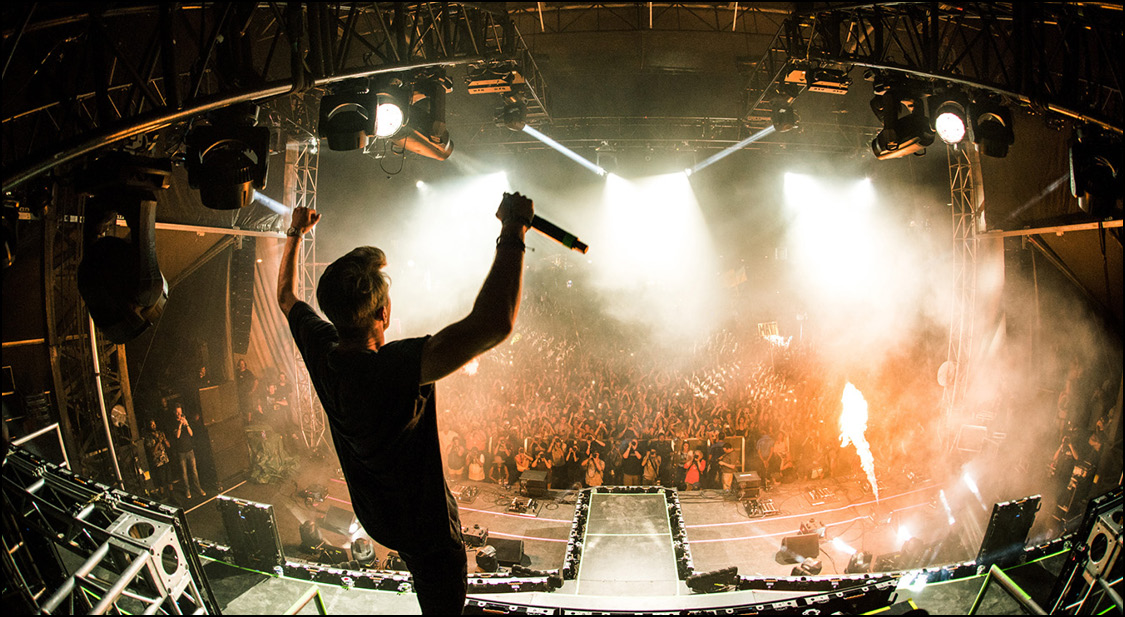
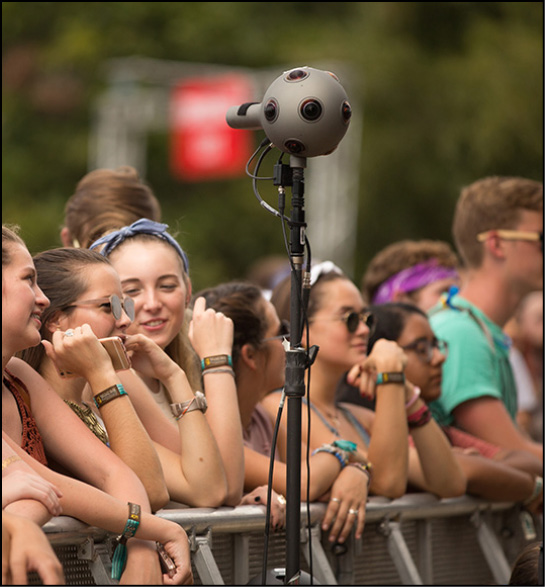
VR camera at work during ACL 2016.
Photo by Cameron Gott for Nokia OZO
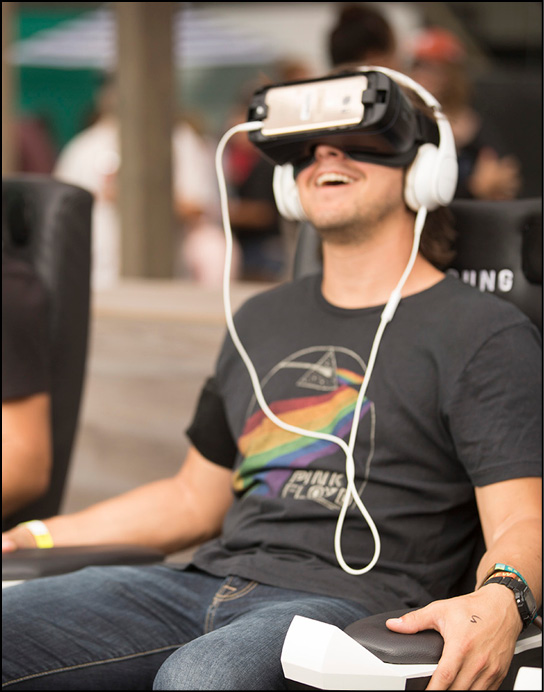
The Chainsmokers at ACL 2016. Photo by Roger Ho
Photo by Cameron Gott for Nokia OZO

Foals at ACL 2016. Photo by Charles Reagan Hackleman

Concerts & Festivals
SXSW.com | november 2016 | SXSWORLD 23
22 SXSWORLD | november 2016 | SXSW.com
By Patrick Nichols
Increasingly Available at Home, In Virtual Reality
Though the technology is still emerging, there is already a receptive consumer base. As of January 2016, Google had distributed five million Cardboard headsets. Oculus Rift pre-orders yielded months-long backorder queues. Best Buy stores opened at midnight when PlayStation VR went on sale in October.
For many early adopters, the initial lure is VR gaming. But a growing breadth of news, sports and entertainment content is attracting users’ attention, too. Recent additions have included presidential debates, golf’s U.S. Open Championship and features from the likes of Conan O’Brien and VICELAND.
The Austin City Limits Music Festival aired daily, 360-degree stereoscopic live streams during weekend one of this year’s event (September 30 - October 2). Participating artists included Mumford & Sons, The Chainsmokers, Nathaniel Rateliff & the Night Sweats and Foals. Sets were broadcast from the Samsung-sponsored main stage and available on Gear VR headsets.
While this was the festival’s first year to livestream in VR, its organizers see the platform as a compelling addition to their future plans. “It’s an extension of the way to experience the festival, and it could be the future. This is year one of VR—we’ve been doing it for a few years, but on the public level, it’s year one. It’s in its infancy, really,” said Daniel Gibbs, video director at C3 Presents, the ACL Festival’s producer.
Successfully executing a live, high-definition VR event from a public park is no simple feat. “It takes a lot of logistics, a lot of technology, as you can imagine. The pipeline needed for virtual reality is at least 4K video, 30 or 60 frames per second,” said Juan Santillan, CEO and founder of Vantage.TV, one of the festival’s VR partners.
However, despite the challenges, he finds the results are more than worth the effort: “Virtual reality is basically giving fans who cannot be here a very intimate and unique perspective of their favorite bands. And it’s giving them access that you can’t even get here—being at the side of the stage, being by the drums, seeing the entire audience.”
Future plans continue to evolve, but Gibbs can foresee VR playing a prominent role in the festival’s growth. “Fans can’t get enough. We have multiple weekends now. For us, VR is an extension. We want to get to the place where there’s a virtual ticket, a virtual experience for all the people who can’t be here, or are too far, or to reach people who don’t even know what the festival is.”
It’s not just single events like the ACL Festival that are evolving VR plans—it’s the entire industry. With multiple and sometimes competing platforms, it is as yet unclear which system(s) will ultimately develop the greatest customer base. While co-branding VR
concerts with a company like Samsung might help with production, distribution and audience capture, another option is to partner with a vendor that is platform agnostic. This is the route chosen by concert promoter Live Nation, which partnered with Citi and NextVR to livestream 10 high-profile concerts over the next year. NextVR says its app will be available on all major VR platforms.
Livestreamed concerts and festivals will play a significant role in the ongoing evolution, but Adi Robertson, reporter for tech website The Verge, suggested that such broadcasts don’t have to be straight digital ports of traditional events: “I think the most interesting experiences would be ones created specifically for headsets, not recordings of a normal physical concert. Things that incorporated interactive or fantastical elements, for example, or that took place in virtual social networks like AltspaceVR, where you could have the experience with a crowd of other virtual participants.”
The musicians who already are or will be performing these shows are becoming increasingly comfortable with VR technology. “As an artist, I'm always trying to get my music in front of as many people as possible, so this just seem like a new way to do that,” said Willy Braun, lead singer of country-rock band Reckless Kelly. “Having said that, nothing will ever take the place of a live concert. It's something that can't be recreated and it's a feeling and experience that can't be duplicated. If you're in the front row of a Springsteen concert and Bruce looks right at you, he really looked right at you. If that happens in virtual reality, he was looking at the camera.”
magine one of your favorite artists is playing a landmark show halfway around the world. Tickets will sell out almost immediately, and your odds of getting a good seat—much less one right by the stage—are slim to none. Plus, that’s not even considering the added cost and hassle of travel.
Now, imagine getting a front-row view without having to leave home. You just strap on a headset and enjoy the show. Sound appealing? The burgeoning virtual reality, or VR, industry is betting your answer will be a resounding “YES!”
Though heavily hyped, VR is still relatively new to the marketplace, with several players introducing viewing devices. Google introduced Cardboard in 2014, and Samsung debuted Gear VR in 2015. This year’s additions include the HTC Vive, Oculus Rift, PlayStation VR and Google Daydream. Google and Samsung devices require compatible smartphones to power the VR, whereas the HTC and Oculus units run off PCs, and the Sony system connects to a PlayStation 4.



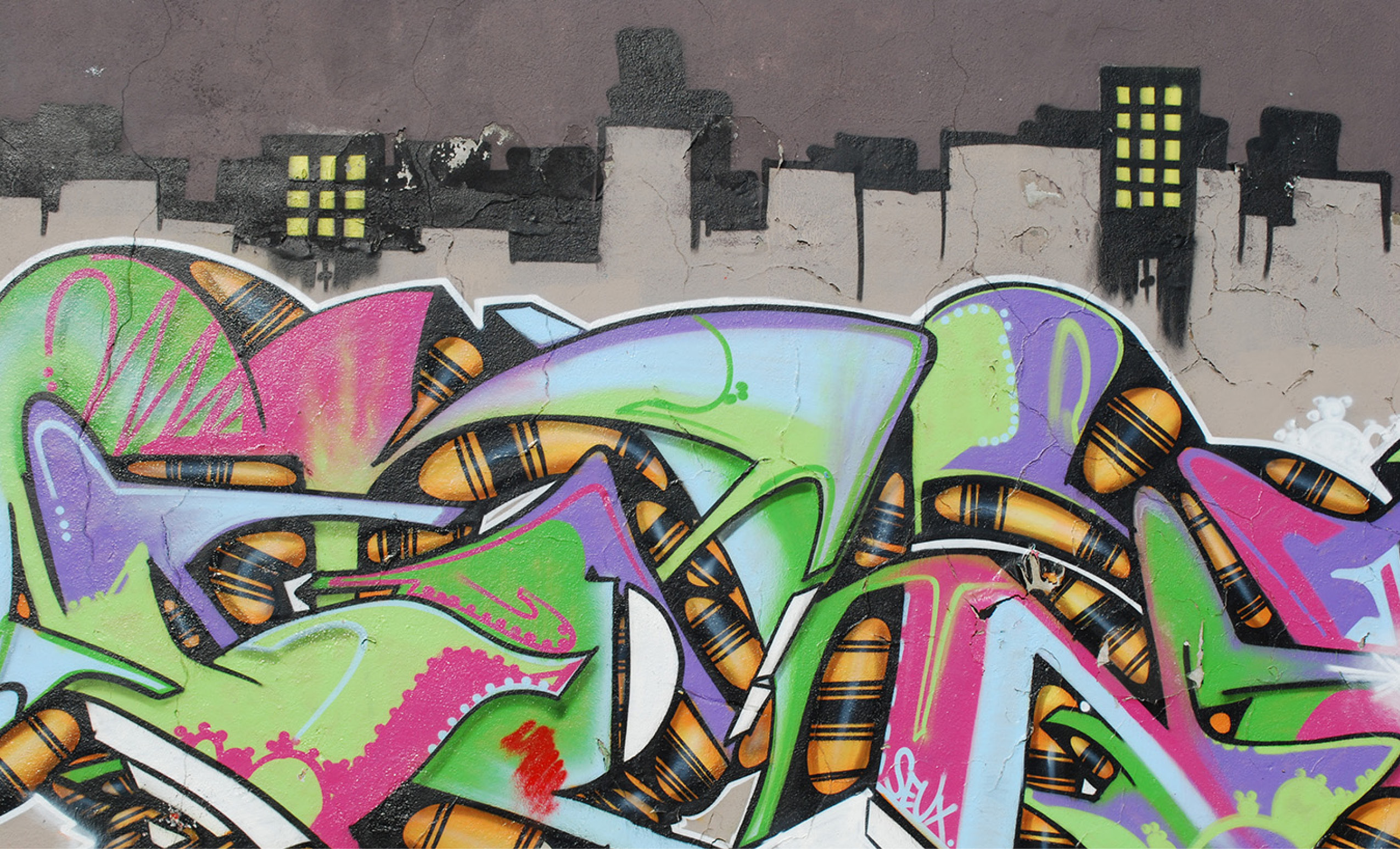

Michael Ford. Photo by Nicole Burton

Hip-Hop aRCHITECTURE:
How Urban Renewal Unintentionally Birthed An Art Form By Dan Solomon
SXSW.com | november 2016 | SXSWORLD 25
24 SXSWORLD | november 2016 | SXSW.com
can fit into hip-hop in the same way that visual art or fashion do, as part of the idea that hip-hop is more than music—even as his work is certainly informed by the music.
“We can look at the MCs, and their lyrics, as counterpoints of architectural history and theory,” he says. “We can look at the development, urban renewal or just blight-busting of different communities, and see how they encouraged, inspired or made MCs react.”
Ford cites Grandmaster Flash and “The Message,” and its critique of modernism and the work of New York City urban planner Robert Moses, in its opening lines (“Broken glass everywhere / people pissin’ on the stairs, you know they just don’t care / I can’t take the smell, can’t take the noise / got no money to move out, I guess I got no choice”) to offer a sharply contrasting view of the architecture of the Bronx projects that Moses pioneered.
Moses factors heavily into Ford’s work, which makes sense given his inadvertent impact on the birth of hip-hop. If hip-hop is about making a dollar out of 15 cents, Moses is partly responsible for ensuring that the culture’s founders didn’t have two dimes, and when Ford talks about connecting the history and theory of architecture to hip-hop, Moses is an obvious example of what he means.
“Le Corbusier was a Swiss architect who had a plan for helping out the working-class citizens of Paris—he wanted to reshape or redesign the center of Paris with these high-rise buildings. He had this grand scheme to liberate the working-class in Paris, and Paris thought he was crazy, because they didn’t know what social impact high-density living would have on its residents, so they never do it,” Ford explains. “Then Robert Moses, years later, builds the Cross-Bronx Expressway in New York, and he goes to Le Corbusier’s plan for Paris as a solution for not displacing residents, which was a huge problem in building the expressway, because they had to play through a black neighborhood. So he samples Le Corbusier’s plan. It’s the worst sample in history—usually, when a hip-hop artist samples something, they take the best part of the song. It’s an original piece, but you want to take that chorus or one note that everybody loves, and you speed it up, slow it down, or stutter it. You want to do something that makes it a new piece, but that resonates with people because it evokes the emotion that the former piece previously did. Robert Moses took the one thing that was heavily critiqued about Le Corbusier’s plan, brought it into New York, and he looped it around the entire country. It became the typology of public housing in the United States—the tall, monotonous towers—and those towers became the birthplace of hip-hop.”
All of this matters both to hip-hop and architecture not just because of the way the birth of one is tied into the ideas behind the other, but because the cities in which hip-hop lives are populated by a diverse collection of people—and the people responsible for shaping those cities are significantly less diverse than the people who live there. As Ford has developed the thesis of hip-hop architecture from grad school project to a new way of thinking about designing the world in which we live, he has pursued a way to redefine what “success” means.
“As an architectural student, most of the names that you hear as precedent studies in those careers are mostly white males, Europeans, and for me, it was always someone outside of myself who defined success,” he says.
Now, though, Ford is designing the Universal Hip Hop Museum in Brooklyn, and he counts the same rappers he idolized throughout his life among his fans. “Success” can come in many forms, and Ford’s vision for an architecture that reflects hip-hop has brought him more than one kind.
“For Rakim just to say your name, and to recognize that the same poetics that he brought, and the lyrical dexterity that he presents,” Ford says, “For him to say that someone is doing the same thing in architecture, and that he sees the correlation, to me, that’s awe-inspiring.”
hen Michael Ford first began composing the idea of hip-hop architecture 12 years ago as a graduate student at the University of Detroit Mercy, he had a hard time explaining to people exactly what it was. Now, after developing his research into a lecture tour, and attracting the attention of luminaries in both hip-hop and architecture, he knows how to drop knowledge about the ways that the two subjects can inform one another in a manner that gets heads nodding around the room.
“It was my thesis in school: ‘What is hip-hop architecture?’ I define it as a few different things. First, it’s how we can use the hip-hop elements—DJ’ing, breaking, MC’ing, and graffiti—as a way to retell architectural history and theory through that lens of hip-hop,” Ford says. “The second thing is to use it as a tool to increase the recruitment, retention and overall success of minorities in architecture. What I do is make architectural history, theory and practice more relevant to people in my communities by connecting some of those historical figures to hip-hop.”
Bringing up the elements—as they’ve been known in hip-hop since the ’70s—reflects a holistic approach to the music. There’s long been a tension in hip-hop culture between the wider aspects and its most commercial forms. Ford’s thesis is that architecture




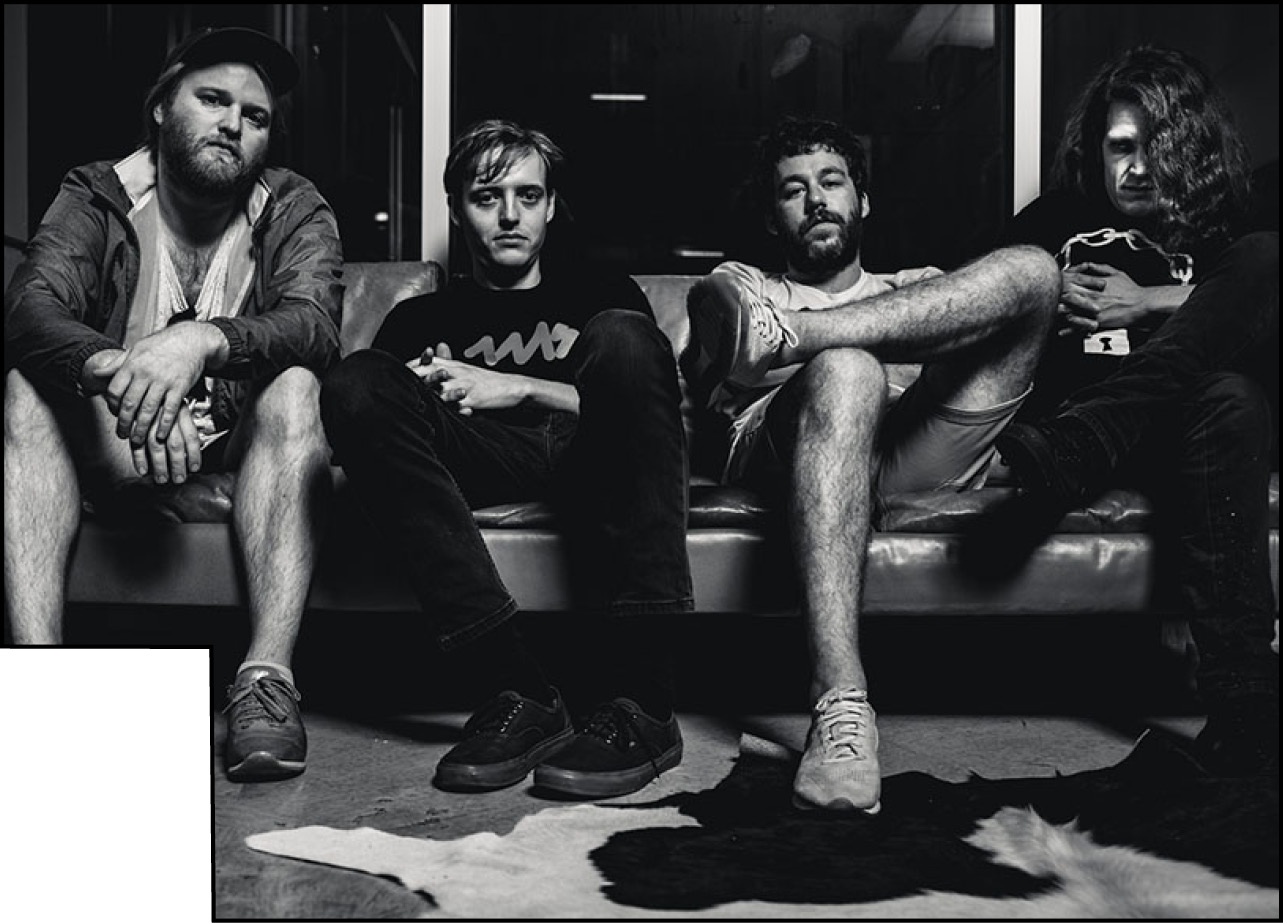
Click for SurvivE Q&A. Photo by Dylan O'Connor

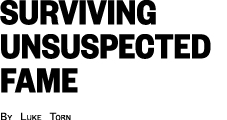
SXSW.com | november 2016 | SXSWORLD 27
Veteran supervisor Holly Hung, whose stellar work enhances everything from The Hunger Games and the Harry Potter franchise to AT&T and BMW commercials, sums up the present landscape succinctly: "As long as it fits and tonally hits everything that it needs to hit, it doesn't matter if it's an indie band, somebody not signed, somebody just dropped ... if it works, it works."
For a prime example now of “what works,” but with a twist, take
S U R V I V E. For some seven years, the synth quartet made up of longtime childhood friends Mark Donica, Kyle Dixon, Michael Stein and Adam Jones quietly composed closets full of spooky, atmospheric material, releasing several indie albums of ’70s-inflected ambience. Creative, unique, focused, and under-the-radar—
S U R V I V E was just another Austin, Texas, combo forging its own daring path.
“I don't know any other bands that sound like us,” surmises Jones, “so you could in fact say that our aesthetic sets us apart.”
Commonly, artists are the ones trying every angle to break through and be heard by music supervisors or others, with artist solicitors highly outnumbering solicitees. For S U R V I V E, though, horror/sci-fi creators the Duffer Brothers called on them, pitching the band on composing for Stranger Things, the 1980s-heavy Netflix series, which is now one of 2016’s surprise hits.
S U R V I V E’s score, including the eerie series theme, has since launched them into the national spotlight.
“The music industry is very weird and often arbitrary,” observes Dixon. “We have been a self-promoting band for a long time, so it feels good to have more people listening to our music now.”
“We always imagined our music would work well in films,” confides Jones, “but we didn't compose anything on our records specifically for soundtracks. I don't know where slow, dark, instrumental synth music fits into the world, but I am glad people dig it.”
Despite the sudden success, they don’t have all eggs in the soundtrack basket. They’re releasing their fourth album, and first for the Relapse label, this fall; which is a long way from s000, their 2011 debut, released on 15 hand-numbered cassettes.
“I think Stranger Things allowed a mass audience to understand how to enjoy our music,” reflects Dixon, easily summarizing this new wrinkle in music marketing. “For a lot of people, they simply needed to know the context of our sound. People have always told us, ‘You guys sound like you should do soundtracks for sci-fi/horror movies.’ "
And whether through talent, timing or the random nature of the digital relam, like those before them, S U R V I V E is learning than it is better late than never to find an audience.
t may seem like ancient history, but once upon a time, the tightly controlled music industry laid out a musician’s path to fame, assembly-line style ... Pay dues, sign to major label and then cross fingers that said label’s promotional skills, especially in attracting radio airplay, would provide the needed traction. A select few reaped massive rewards, while even one-hit wonders were able to carve out reasonable careers.
Still, thousands of talented artists fell through the cracks, never to be heard from again. Others, including some of the most creative and groundbreaking, like Velvet Underground or Big Star, toiled under the radar, receiving passing popular glances at best and virtually no commercial success.
But in these days of playlist culture and hyper-social media, such processes of discovery and rediscovery are speeding up, becoming seemingly more random than ever, yet just as often synchronous in brand new ways.
Take Scottish folk-rockers the Proclaimers. An example of a band that tumbled to obscurity then crawled back out to find unexpected fame and fortune, their arbitrary stroke of luck portended complex music-and-fame metrics much more prominent in today’s pop culture landscape.
Led by twin brothers Craig and Charlie Reid, the Proclaimers released their debut album, Sunshine on Leith, in 1988. Though it received some U.S. college radio airplay and minor European chart action, the band was dormant by 1993. Enter Jeremiah Chechik, director of the romantic comedy Benny & Joon, who, with the support of its star Mary Stuart Masterson, inserted “I’m Gonna Be (500 Miles)” into the film’s key scene. Soon enough, the group’s amped-up paean to love and determination rose to #3 on the Billboard charts, and the song propelled the Proclaimers to a beneficent career undreamed of just a few years before.
"You couldn't have scripted it," remarked Charlie Reid at the time. "It was a total surprise to us and, I'm sure, to the record company as well."
Unlike Nick Drake, at least the Proclaimers were alive to enjoy their second act. When in 1999 Volkswagen chose Drake’s dreamy “Pink Moon” to advertise its stylish Cabriolet convertible, the troubled, introvert songwriter who released three strong folk/pop albums between 1969 and 1972 without even remotely threatening the charts—had been dead for a quarter century. Described by Rolling Stone as “one of pop music’s cruelest ironies yet … one of pop music’s luckiest breaks,” the atmospheric ad caused sales of Drake’s Pink Moon album to spike, reaching #5 on Amazon’s sales charts.
Soundtracks, TV scores, advertising and video games all now provide discoverable moments for musical unknowns—be they dead or alive, one-time wonders or retired truck drivers. Meanwhile, a cottage industry of music supervisors, those who match music to media, has arisen. New-world synchronization now presents music in ways that the old radio-to-ears formula could never fathom.



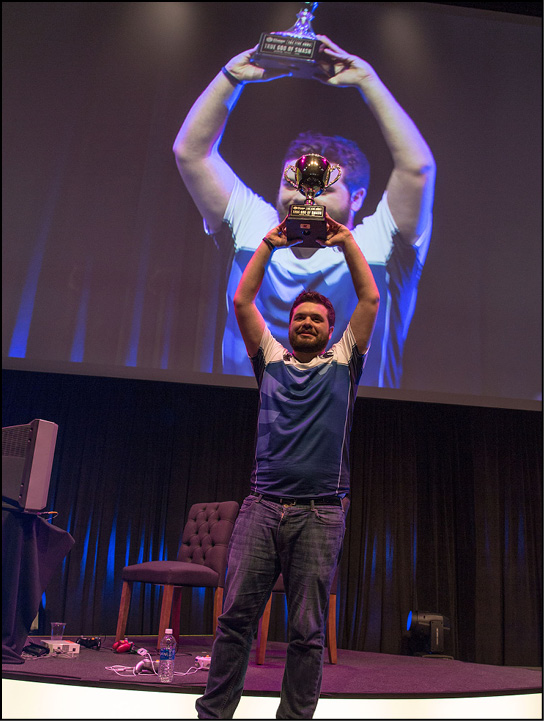
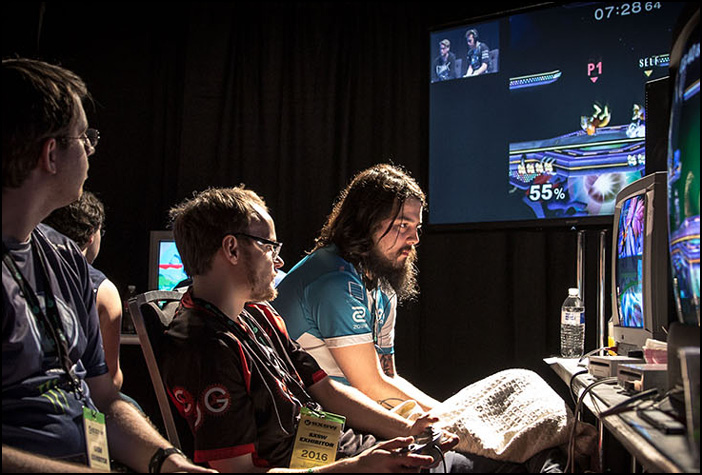
SXSW Gaming 2016 Tournament Stage. Photo by Lisa Hause
SXSW Gaming 2016 Tournament Stage winner. Photo by Lisa Hause
Photo courtesy of ELEAGUE/Turner Sports

esports!
How Online Gaming Leagues Have Become Bigger Than Basketball ...
Seriously
By Jared Dubin

In 2013, the global eSports audience was estimated to be some 71.5 million people... that figure rose a whopping 216% … in 2015.
SXSW.com | november 2016 | SXSWORLD 29
28 SXSWORLD | november 2016 | SXSW.com
the eSports world and has helped propel its popularity. Competitions and tournaments are often livestreamed on the platform, allowing viewers at home to feel like they are right there in the stands with the rest of the boisterous competitive gaming audience. Not only that, but several eSports athletes have taken to livestreaming their practices, giving the rabid fanbase even more access to their favorite athletes than fans of traditional sports usually get.
Twitch was also used as a simulcast partner in ELEAGUE, the Counter-Strike: Global Offensive (or CS: GO, as it’s commonly called) league that began broadcasting in 2015. Turner Broadcasting partnered with WME/IMG to bring the league to life, showcasing a competition of 24 teams from all over the world over a 10-week season. The teams descended on Turner Studios and competed live in the ELEAGUE Arena for a $1.4 million prize pool.
Christina Alejandre, ELEAGUE’s Vice President and General Manager, said that ELEAGUE attracted more than 3.4 million new viewers (and more than 19 million total viewers) to TBS during its inaugural 10-week season, and 168,000 people on Twitch watched the championship alone. The entire first season generated more than 25 million live streams.
With an audience almost entirely comprised of millennials who are comfortable watching sports and other entertainment on their laptops (or via Xbox One or PlayStation 4, which Twitch can also run through), the eSports community knows that capitalizing on the platform is paramount. “Streaming is really where it’s at and where I expect it to mostly remain because streaming is the future of this kind of content being broadcast,” Wynne said.
The second season of ELEAGUE, which began airing live on TBS on October 21, is expected to draw many millions more viewers, both to the network and to Twitch. ELEAGUE should only grow from there, expanding to include competition in more games as well. They’ve already run an Overwatch tournament in between Seasons 1 and 2 of ELEAGUE. “We had a championship week at the ELEAGUE studio,” Alejandre said. “It was a great, fantastic tournament. We had a lot of the top teams and players.”
Much like the teams competing in ELEAGUE and other leagues and tournaments like it, the eSports audience hails from all over the world, which bodes well for its growth potential in the future. “eSports has been around for over a decade and is hugely popular in Asia,” Alejandre said. “They’re pretty much equally as popular—maybe a little bit more popular—in Europe. South America has a burgeoning scene. So it is a worldwide, international phenomenon.”
As ratings for traditional live sports, such as the NFL, tumble, the popularity of eSports only continues to grow. It helps that traditional media outlets such as ESPN and FOX have dedicated time and resources to covering competitive gaming, treating it like any other sport that fans love. As more and more kids grow up with it as a regular part of the world sports scene, the fanbase should expand accordingly. Considering the kind of money that is already being poured into the eSports world, and the fact that the eSports community is on the forefront of the streaming sports world, right now the potential for the future seems nearly unlimited.
ou might think that the massive popularity of eSports, or competitive video gaming, is something that just bubbled up overnight. And even if you know that eSports has become more and more popular over the last few years, it is possible that you think the phenomenon is still just a curiosity and not a booming worldwide business. You are wrong.
In 2013, the global eSports audience was estimated to be some 71.5 million people. That’s already more people than live in the U.K. or France. Within two years, though, that figure rose a whopping 216 percent to an incredible 226 million people in 2015. More people watched the League of Legends World Championship (36 million) than Game 7 of the NBA Finals (31 million). The Super Bowl was the only live sporting event that had more viewers.
What does that translate to in terms of business? How about $325 million in 2015? How about a projected $463 million in 2016? And how about an estimated one billion dollars by 2019?
But even that growth would not have been possible without the foundation created in years past. “The growth has been more steady than it seems,” explained Jared Wynne, Business Development Manager at The Daily Dot, who is heavily involved in the eSports space. “Most people think it kind of blew up a few years ago. Really, it’s been a case of slowly building up over the course of a couple decades. You have to go back to the late ’90s to find the origins of programs and competitions that we have now. You have to go back to the early ’00s to find the origins of league play and competitions.”
It is not just the viewership and revenue that have been pushed forward, either. It’s also the technology. The streaming service Twitch.tv, which first launched in 2011, has become a huge part of



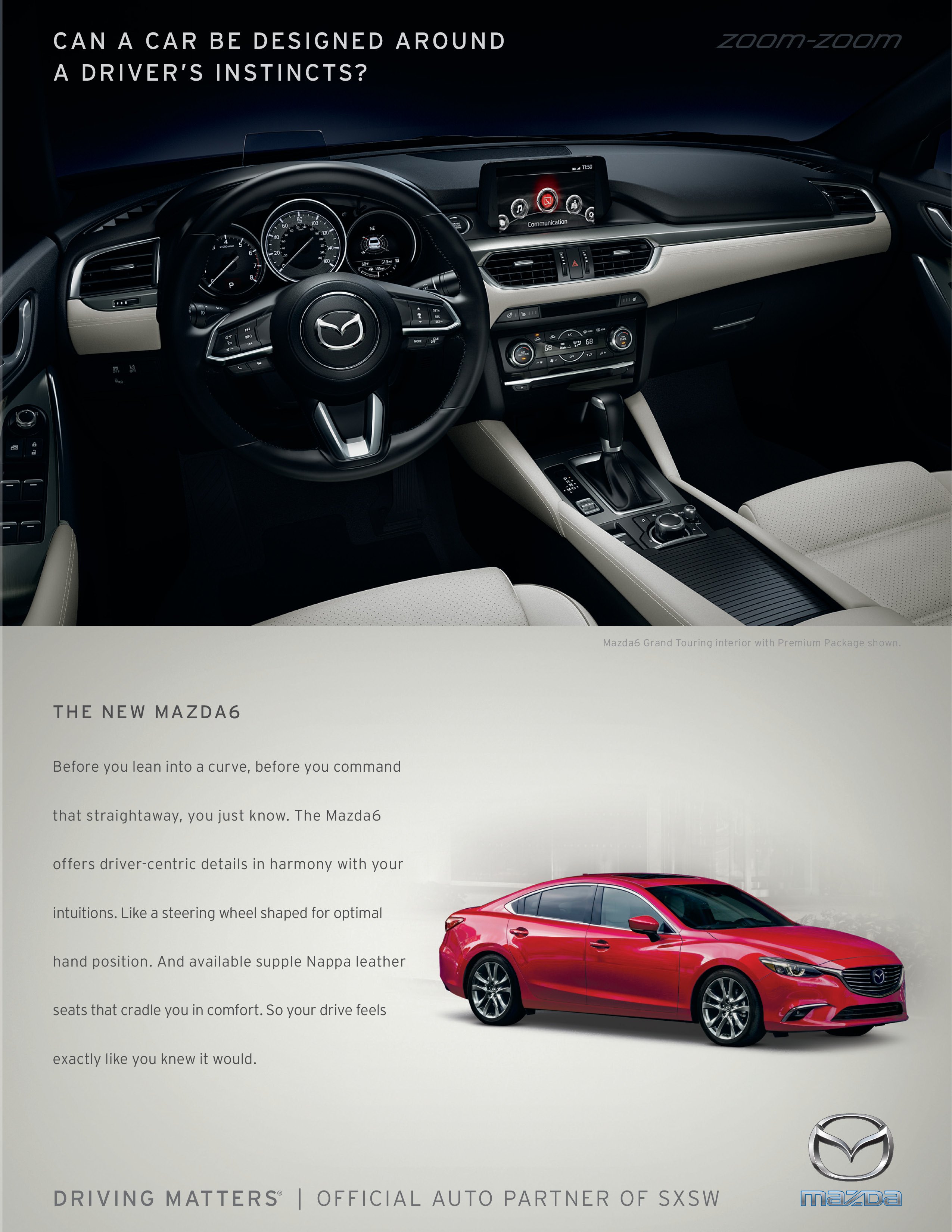
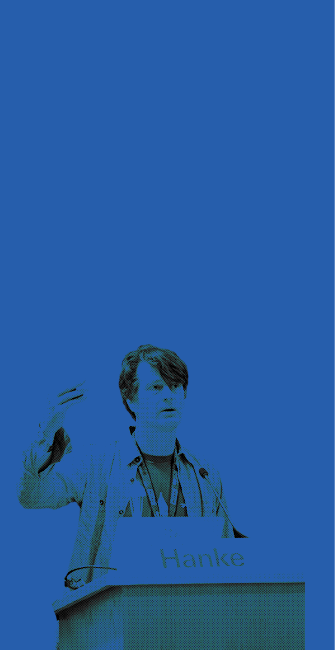
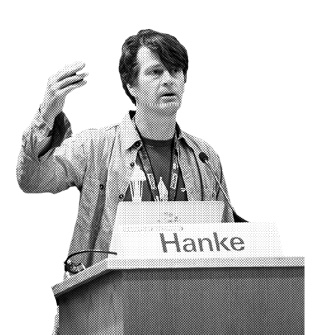
“In terms of hardware, augmented reality’s going to be much more evolutionary. It’s not going to be the launch of a specific device, but rather it is a collection of devices that are going to extend the capabilities of the cell phone, add new capabilities to get information in a frictionless way ...”
Photo by Samantha Burkardt

A Look Back

John Hanke
Founder & CEO of Niantic, Inc.
John Hanke is founder and CEO of Niantic, Inc., which builds augmented reality mobile games and partnered with Nintendo and The Pokémon Company to create the phenomenally successful Pokémon GO. Hanke’s SXSW 2016 session was entitled “The Future of AR Is Already in Your Pocket” and during it, he gave attendees the first glimpse of Pokémon GO.
30 SXSWORLD | november 2016 | SXSW.com






